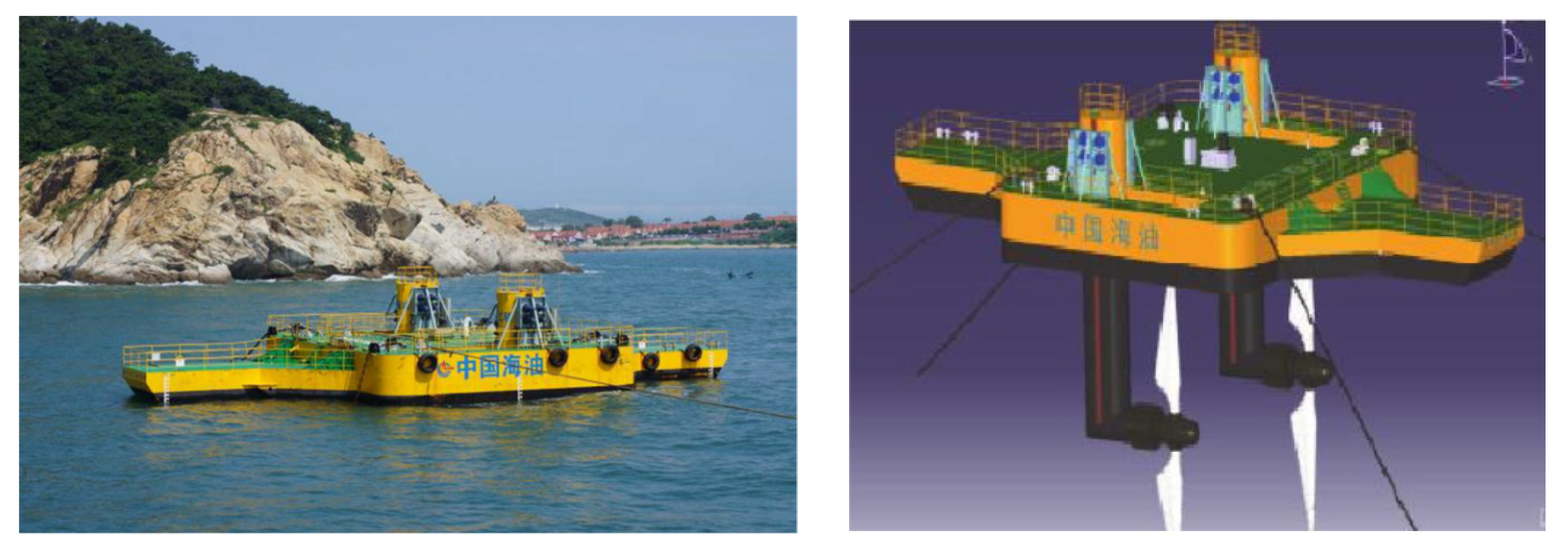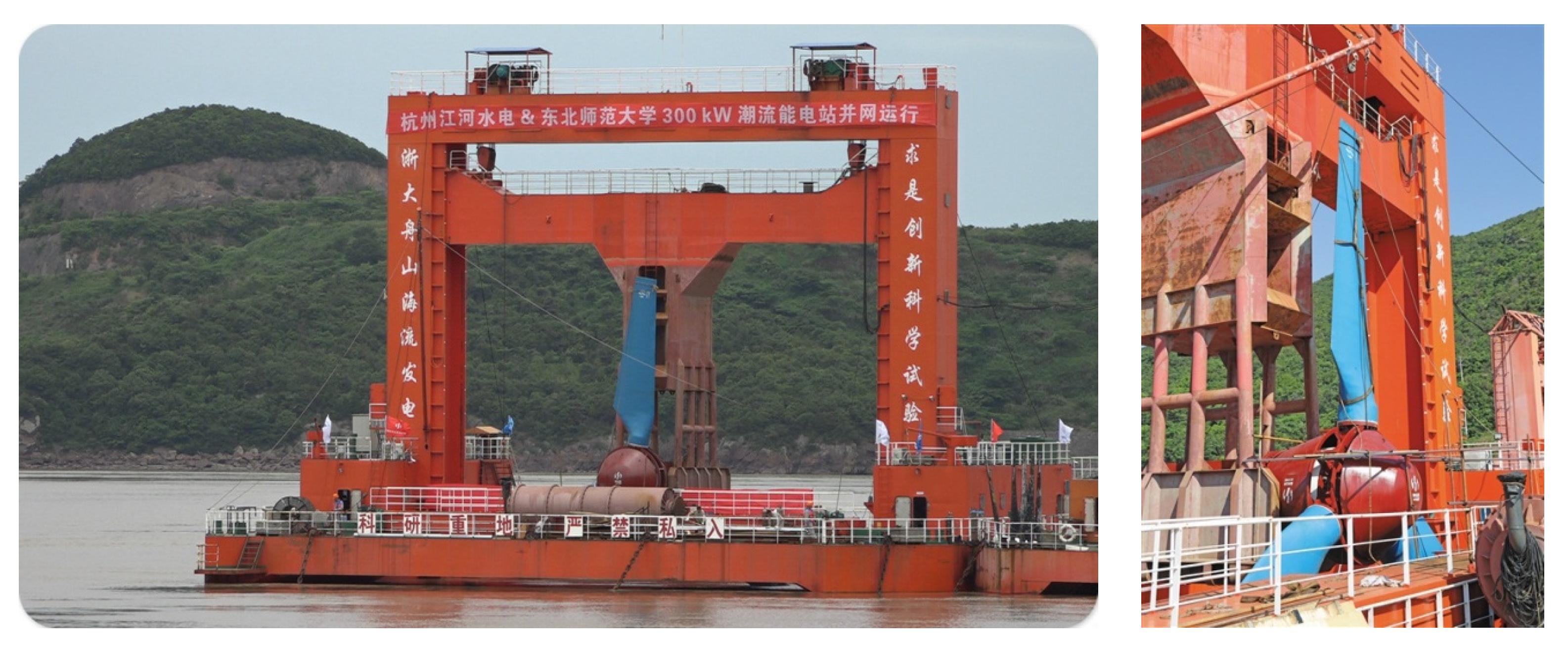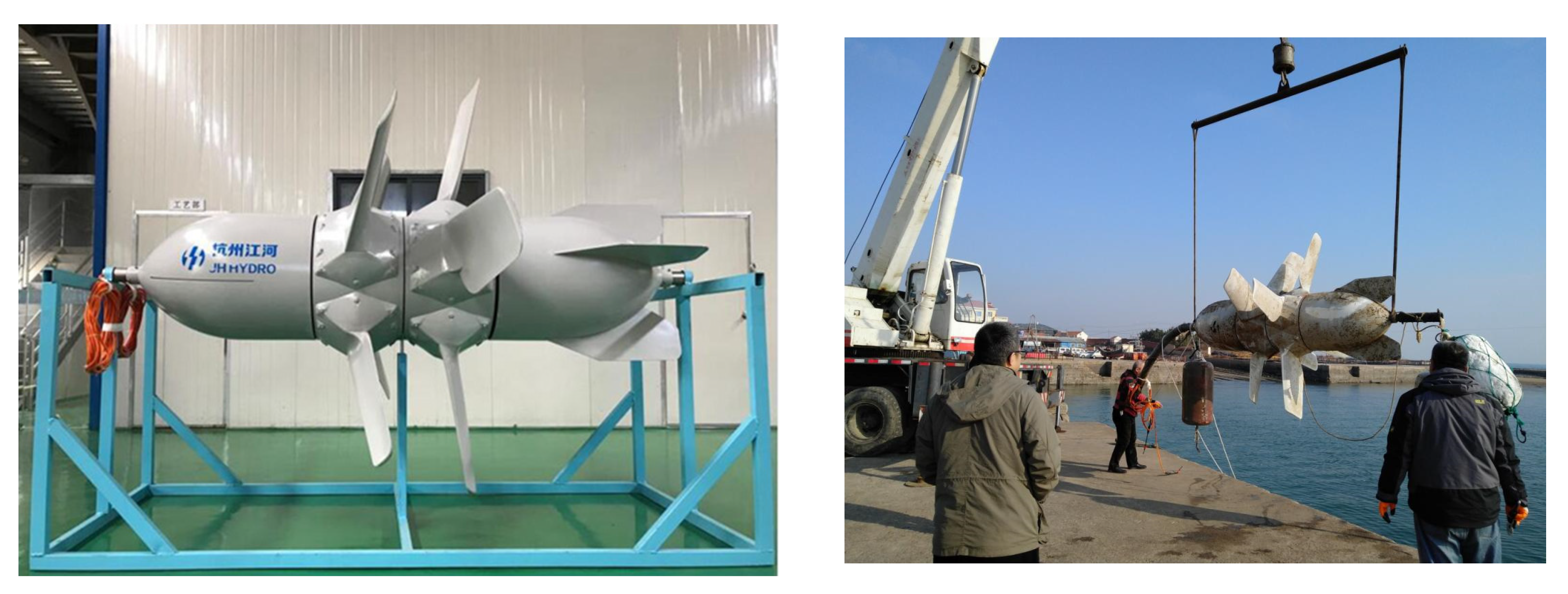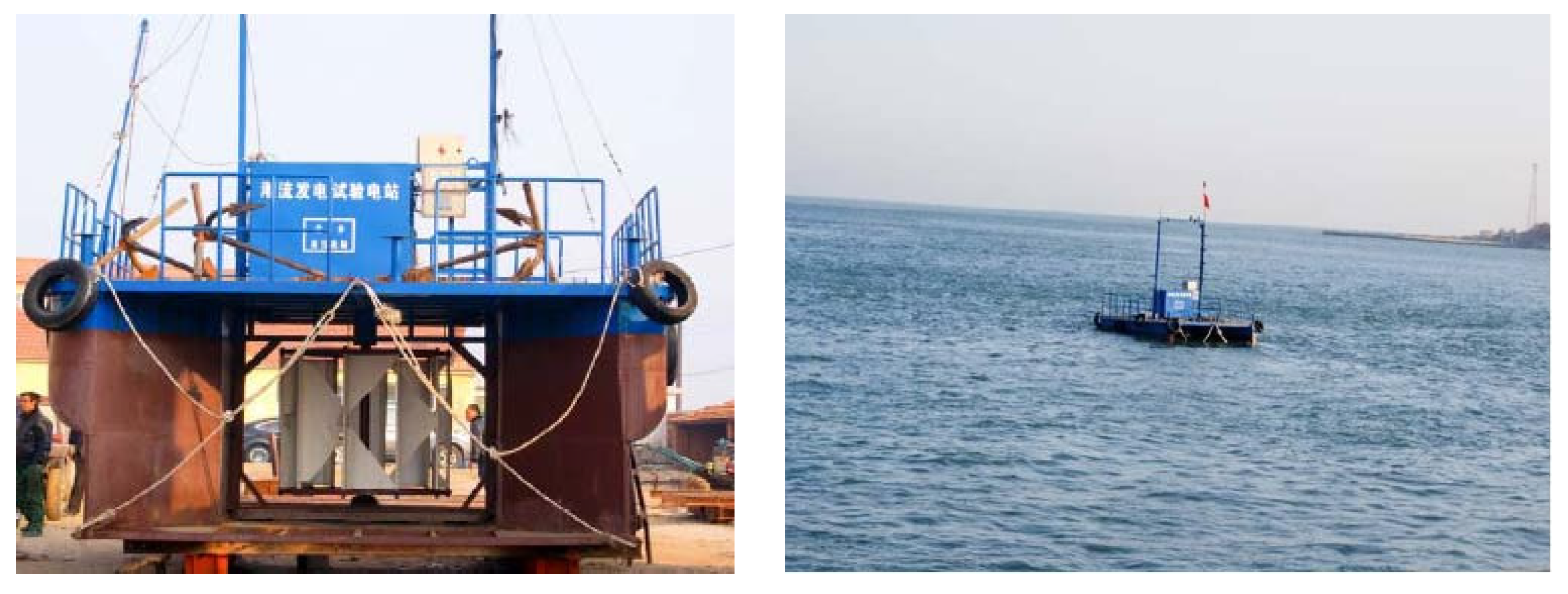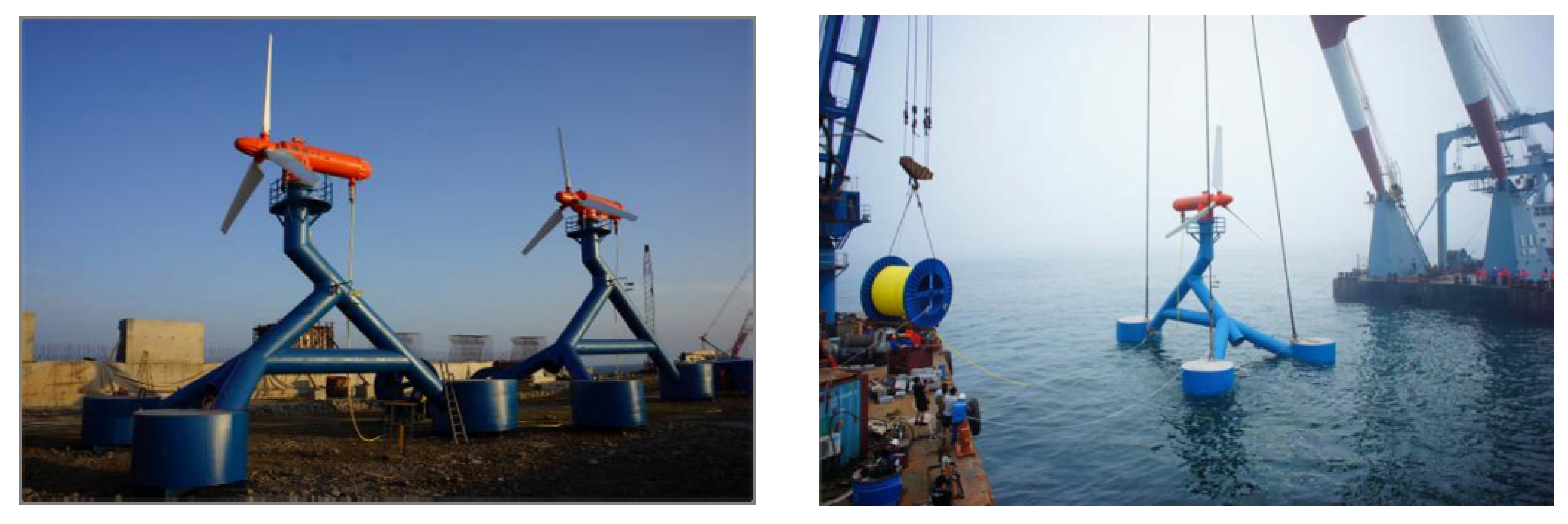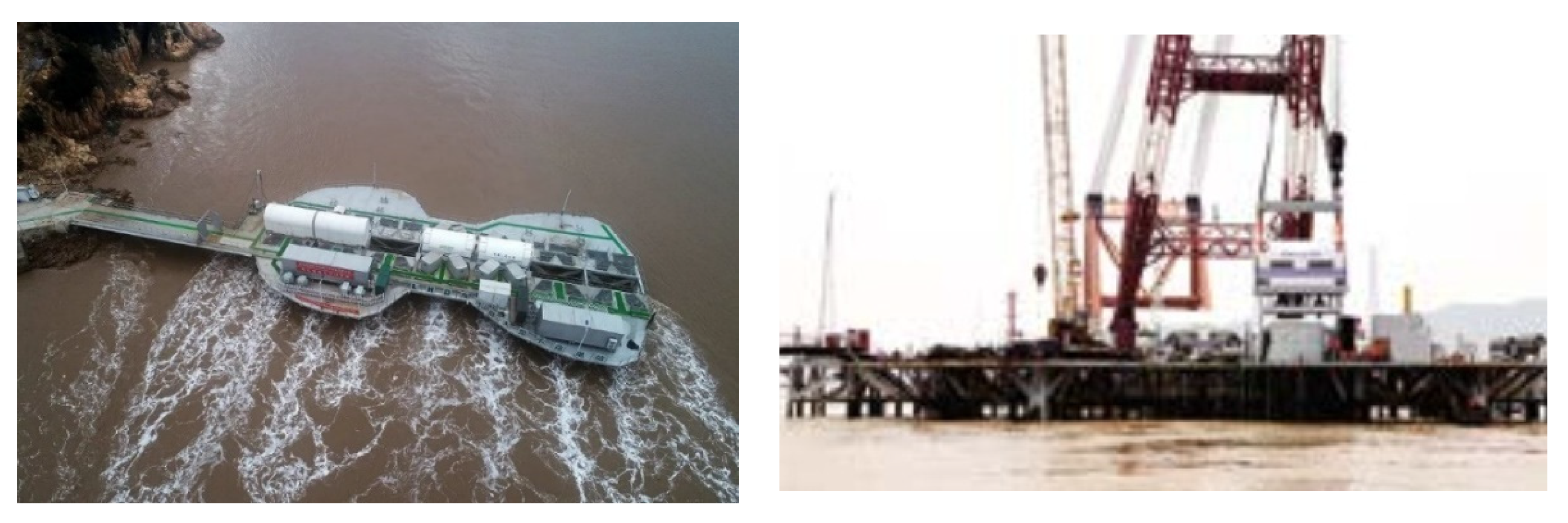Development and Research Status of Tidal Current Power Generation Systems in China
Abstract
1. Introduction
2. Reserves and Distribution of Tidal Current Energy Resources in China
3. Current Situation of Research in China
3.1. Early Research
3.2. HEU
3.3. NENU
3.4. ZJU
3.5. OUC
3.6. DUT
3.7. LHD
3.8. HEC
3.9. China Three Gorges Corporation
3.10. Institute of Electrical Engineering of Chinese Academy of Sciences
3.11. NOTC
3.12. Qingdao Haisizhuang Iron Tower Co., Ltd.
3.13. Others
4. Discussion
5. Summary
Author Contributions
Funding
Institutional Review Board Statement
Informed Consent Statement
Data Availability Statement
Acknowledgments
Conflicts of Interest
References
- Chen, H.; Tang, T.; Aït-Ahmed, N.; Benbouzid, M.; Machmoum, M.; Zaïm, M. Attraction, challenge and current status of marine current energy. IEEE Access 2018, 6, 12665–12685. [Google Scholar] [CrossRef]
- Zhu, W.; Wu, B.; Zhao, Y.; Chen, J.; Dong, Y.; Zhang, X. Experimental Study on the Electric Supplementary Device Rated 2.5 kW for Marine Observation Instrument. Mar. Technol. Soc. J. 2016, 35, 41–44. [Google Scholar]
- Zhou, Z.; Benbouzid, M.; Charpentier, J.F.; Scuiller, F.; Tang, T. Developments in large marine current turbine technologies—A review. Renew. Sust. Energy Rev. 2017, 71, 852–858. [Google Scholar] [CrossRef]
- Xia, H. Research on Power Performance Testing and Analyzing Method of Electricity Producing Tidal Energy Converter. Master’s Thesis, Dalian Ocean University, Dalian, China, 2015. [Google Scholar]
- Zhang, L.; Li, X.; Geng, J.; Zhang, X. Tidal Current Energy Update 2013. Adv. New Renew. Energy 2013, 1, 53–68. [Google Scholar]
- Liu, H.; Ma, S.; Li, W.; Gu, H.; Lin, Y.; Sun, X. A review on the development of tidal current energy in China. Renew. Sustain. Energy Rev. 2011, 15, 1141–1146. [Google Scholar] [CrossRef]
- Li, D.; Wang, S.; Yuan, P. An overview of development of tidal current in china: Energy resource, conversion technology and opportunities. Renew. Sustain. Energy Rev. 2010, 14, 2896–2905. [Google Scholar] [CrossRef]
- Liu, H.; Bahaj, A. Status of Marine Current Energy Conversion in China. Int. Mar. Energy J. 2021, 4, 11–23. [Google Scholar] [CrossRef]
- Bai, Y.; Du, M.; Zhou, Q.; Meng, J.; Wu, H. Proceeding of Tidal Current Energy Conversion System. Ocean Dev. Manag. 2016, 33, 57–63. [Google Scholar]
- Liu, Y.; Li, Y.; He, F.; Wang, H. Comparison study of tidal stream and wave energy technology development between China and some Western Countries. Renew. Sustain. Energy Rev. 2017, 76, 701–716. [Google Scholar] [CrossRef]
- Liu, X.; Chen, Z.; Si, Y.; Qian, P.; Wu, H.; Cui, L.; Zhang, D. A review of tidal current energy resource assessment in China. Renew. Sustain. Energy Rev. 2021, 145, 111012. [Google Scholar] [CrossRef]
- Guan, C. Concept Design and Performance Study of Floating Tidal and Wind Power Station. Master’s Thesis, Harbin Engineering University, Harbin, China, 2015. [Google Scholar]
- Overview of Ocean Energy. Available online: https://www.doc88.com/p-2942374039404.html (accessed on 25 September 2021).
- Zhang, L.; Li, Z. Development Status, Trend and the Problems of Mechanics of Tidal Current Energy. Chin. J. Theor. Appl. Mech. 2016, 48, 1019–1032. [Google Scholar]
- You, Y.; Li, W.; Liu, W.; Li, X.; Wu, F. Development Status and Perspective of Marine Energy Conversion Systems. Autom. Electr. Power Syst. 2010, 34, 1–12. [Google Scholar]
- Bai, Y.; Hou, E.; Du, M. Research progress of tidal current power generation devices. In Proceedings of the China Marine Re-newable Energy Development Annual Conference and Forum, Guangdong, China, 25–26 May 2015. [Google Scholar]
- Zhang, X. The Study of Con-horizontal Tidal Current Self-Pitch Turbine with Dual Rator. Ph.D. Thesis, Northeast Normal University, Changchun, China, 2013. [Google Scholar]
- Gu, Y. Study on the Key Technologies of the Grid-connected Marine Current Turbine’s Control System. Ph.D. Thesis, Zhejiang University, Hangzhou, China, 2018. [Google Scholar]
- Zhang, Y.; Lin, Z.; Liu, Q. Marine renewable energy in China: Current status and perspectives. Water Sci. Eng. 2014, 7, 288–305. [Google Scholar]
- Hu, G. Two-dimensional Numerical Simulation of Vertical Current Turbine’s Hydrodynamic Performance. Master’s Thesis, Ocean University of China, Qingdao, China, 2015. [Google Scholar]
- Zheng, J.; Dai, P.; Zhang, J. Tidal Stream Energy in China. Procedia Eng. 2015, 116, 880–887. [Google Scholar] [CrossRef][Green Version]
- Liu, Y.; Ma, C.; Jiang, B. Development and the environmental impact analysis of tidal current energy turbines in China. In Proceedings of the IOP Conference Series: Earth and Environmental Science; IOP Publishing Ltd.: Bristol, UK, 2018; Volume 121, p. 2003. [Google Scholar]
- Hu, T. Research on the Influence of Blade Profile Precision on Tidal Turbine Airfoils. Master’s Thesis, National Ocean Technology Center, Tianjin, China, 2019. [Google Scholar]
- Wang, F. Design and Method Research of Pile Foundations for Tidal Current Power Generator Device. Master’s Thesis, North China Electric Power University, Beijing, China, 2018. [Google Scholar]
- Ana, B.M.; José, L.V. Country Reports. In Annual Report: Implementing Agreement on Ocean Energy Systems; The Executive Committee of Ocean Energy Systems: Paris, France, 2013; p. 127. [Google Scholar]
- Wu, B. Research on the Horizontal Axis Tidal Stream Turbine. Ph.D. Thesis, Northeast Normal University, Changchun, China, 2015. [Google Scholar]
- Li, T. Coupling Hydrodynamic Analysis of Vertical Axis Dual Rotor Floating Tidal Current Generator. Master’s Thesis, Harbin Engineering University, Harbin, China, 2017. [Google Scholar]
- Cheng, S. Research on the Influence of Duct on the Performance of Vertical Axis Tidal Turbine. Master’s Thesis, Dalian University of Technology, Dalian, China, 2017. [Google Scholar]
- Gao, W. Study on Hydrodynamic Performance of Self-adapt Floating Tidal Current Energy Generating Device. Master’s Thesis, Ocean University of China, Qingdao, China, 2014. [Google Scholar]
- Ana, B.M.; José, L.V. International Activities on Ocean Energy. In Annual Report: Ocean Energy Systems 2015; The Executive Committee of Ocean Energy Systems: Paris, France, 2015; p. 61. [Google Scholar]
- Lu, L. Experimental Study on Hydrodynamic Performances of Flexible Blade Turbine Driven by Tidal Energy. Master’s Thesis, Ocean University of China, Qingdao, China, 2009. [Google Scholar]
- Li, B.; Li, L.; Yang, L.; Yang, X.; Xiao, Y. Utilization and research status of tidal current energy. Sol. Energy 2010, 9, 39–42. [Google Scholar]
- Ding, X. Research on the Variable Pitch Control of the Tidal Current Turbines. Master’s Thesis, Harbin Engineering University, Harbin, China, 2015. [Google Scholar]
- Zhu, W.; Xu, M.; Zhang, M. Study on the Key Technologies of Horizontal Axis Surface Tidal Current Generating. Acta Energ. Sol. Sin. 2012, 33, 1067–1072. [Google Scholar]
- Chen, J.; Wu, B.; Zhu, W.; Xu, M.; Dong, Y.; Zhang, X. Design and Research of Passive Adaptive Bidirectional Flow Blade for Horizontal Axis Tidal Current Energy. Acta Energ. Sol. Sin. 2018, 39, 3295–3301. [Google Scholar]
- Special Fund Project of State Oceanic Administration—300 kW Horizontal Axis Tidal Current Generator Set. Available online: http://www.hjhe.cn/abc/ (accessed on 25 September 2021).
- Dong, Y.; Guo, J.; Chen, J.; Sun, C.; Zhu, W.; Chen, L.; Zhang, X. Development of a 300 kW horizontal-axis tidal stream energy conversion system with adaptive variable-pitch turbine and direct-drive PMSG. Energy 2021, 226, 120361. [Google Scholar] [CrossRef]
- Innovation Road of Zhejiang Hydropower People—Tidal Current Power Generation. Available online: http://kjb.zjol.com.cn/html/2019-09/17/content_2680821.htm?div=-1 (accessed on 25 September 2021).
- Power Supply System for Underwater Marine Instruments. Available online: http://www.hjhe.cn/abc/show.php?lang=cn&id=272 (accessed on 25 September 2021).
- Major Scientific Research Project of Oceanic Administration—Successful Grid Connection of 300 kW Horizontal Axis Tidal Current Energy Generator Set. Available online: http://www.hjhe.cn/abc/show.php?lang=cn&id=272 (accessed on 25 September 2021).
- Our School Has Made Great Progress in the Field of Marine Instrument Power Supply. Available online: http://www.nenu.edu.cn/info/1055/12910.htm (accessed on 25 September 2021).
- Wang, S. Study on Hydrodynamic Performances of a Tidal Current Energy Conversion Device with Flexible Blade Turbine. Ph.D. Thesis, Ocean University of China, Qingdao, China, 2009. [Google Scholar]
- Liu, H.; Li, W.; Lin, Y.; Ma, S. Model Analysis and Test Research of Horizontal-axial Marine Current Turbine. Acta Energ. Sol. Sin. 2009, 30, 633–638. [Google Scholar]
- Lin, Y.; Li, W.; Liu, H.; Ma, S. Ocean Current Power Generation Technology for Underwater Turbine. J. Zhejiang Univ. (Eng. Sci.) 2008, 42, 1242–1246. [Google Scholar]
- Li, W.; Lin, Y.; Liu, H.; Ma, S. Research on ocean current energy generation technology of horizontal shaft propeller. In Proceedings of the Inaugural Meeting and the First Symposium of Ocean Energy Professional Committee of China Renewable Energy Society, Hangzhou, China, 27–28 March 2008. [Google Scholar]
- Xu, Q. Research on Load Analysis and Control for Horizontal Axis Marine Current Turbine. Ph.D. Thesis, Zhejiang University, Zhejiang, China, 2015. [Google Scholar]
- Yang, J. Study on Hydraulic Drive and Pitching System of Horizontal Axis Tidal Current Turbine. Master’s Thesis, Zhejiang University, Hangzhou, China, 2017. [Google Scholar]
- Ma, S.; Li, W.; Liu, H.; Lin, Y. Design and Experiment of an Electro-hydraulic Proportional Variable Pitch Control System for Tidal Current Turbines. Autom. Electr. Power Syst. 2010, 34, 86–90. [Google Scholar]
- Liu, H.; Li, W.; Lin, Y.; Ma, S. Tidal current turbine based on hydraulic transmission system. J. Zhejiang Univ.-SCIENCE A (Appl. Phys. Eng.) 2011, 12, 511–518. [Google Scholar] [CrossRef]
- Ma, S.; Li, W.; Liu, H.; Lin, Y. Research on the Energy Capture Device of Horizontal Axis Tidal Current Energy Conversion Systems. J. Mech. Eng. 2010, 46, 150–156. [Google Scholar] [CrossRef]
- Lei, C. Study on Characteristics of Marine Current Turbine with Co-horizontal Axis and Double Impellers. Master’s Thesis, North China Electric Power University, Beijing, China, 2016. [Google Scholar]
- Ma, S.; Li, W.; Liu, H.; Lin, Y. A 25 kW Stand-alone Horizontal Axis Tidal Current Turbine. Autom. Electr. Power Syst. 2010, 34, 18–22. [Google Scholar]
- Xu, Q.; Li, W.; Lin, Y.; Liu, H.; Gu, Y. Investigation of the performance of a stand-alone horizontal axis tidal current turbine based on in situ experiment. Ocean. Eng. 2016, 113, 111–120. [Google Scholar] [CrossRef]
- Xu, Q.; Liu, H.; Lin, Y.; Yin, X.; Li, W.; Gu, Y. Development and experiment of a 60 kW horizontal-axis marine current power system. Energy 2015, 88, 149–156. [Google Scholar] [CrossRef]
- Li, W.; Liu, H.; Lin, Y.; Zhou, H.; Gu, Y.; Xu, Q. Offshore test of 60kW horizontal axis tidal current generator set. In Proceedings of the 4th China Annual Conference and Forum on Marine Renewable Energy Development, Weihai, China, 28 May 2015. [Google Scholar]
- Touimi, K.; Benbouzid, M.; Tavner, P. Tidal stream turbines: With or without a Gearbox? Ocean. Eng. 2018, 170, 74–88. [Google Scholar] [CrossRef]
- Liu, Y.; Wang, H.; Wang, J.; Chen, L.; Sun, Y.; Zhang, R.; Tang, J. Utilization Status and Suggestions on Development of Tidal Current Energy in Zhoushan Area. Ocean. Dev. Manag. 2016, 33, 77–79. [Google Scholar]
- Jia, F.; Chu, J.; Yuan, L.; Wang, T. Research and development on the safety system for tidal current energy turbine. Renew. Energy Resour. 2020, 38, 1693–1697. [Google Scholar]
- World Leader! United Power 300kW Tidal Current Energy Generator Set Realizes Safe and Fault-Free Operation for Three months. Available online: https://www.sohu.com/a/246401200_472920 (accessed on 25 September 2021).
- Gu, Y.; Liu, H.; Li, W.; Lin, Y.; Li, Y. Integrated design and implementation of 120-kW horizontal-axis tidal current energy conversion system. Ocean. Eng. 2018, 158, 338–349. [Google Scholar] [CrossRef]
- Li, Y.; Liu, H.; Lin, Y.; Li, W.; Gu, Y. Design and test of a 600-kW horizontal-axis tidal current turbine. Energy 2019, 182, 177–186. [Google Scholar] [CrossRef]
- High Efficiency Horizontal-Axis 650 kW Ocean Current Energy Generator Set Rerun after Optimization—Maximum Single Power. Available online: http://me.zju.edu.cn/mecn/2020/0119/c6200a1957587/page.htm (accessed on 25 September 2021).
- Ana, B.M.; Henry, J. International Activities. In Annual Report: An Overview of Ocean Energy Activities in 2017; The Executive Committee of Ocean Energy Systems: Paris, France, 2017; p. 59. [Google Scholar]
- Ma, S. Study on Energy Conversion Efficiency and Power Control of Horizontal Axis Tidal Current Energy Conversion Systems. Ph.D. Thesis, Zhejiang University, Hangzhou, China, 2011. [Google Scholar]
- Zhao, L.; Wang, S.; Li, D. The Status and Trends of Marine Current Energy Conversion in the World. In Proceedings of the second National Symposium on Ocean Energy, Harbin, China, 17–18 September 2009. [Google Scholar]
- Guo, W. Numerical and Experiment Studies on a Novel Vertical-axis Tidal Current Energy Conversion Device. Ph.D. Thesis, Dalian University of Technology, Dalian, China, 2014. [Google Scholar]
- Zhang, P. Investigation of the Structural Dynamic Response for Vertical-axis Tidal Current Turbine. Master’s Thesis, Shanghai Jiao Tong University, Shanghai, China, 2017. [Google Scholar]
- Li, J.; Wang, S.; Si, X.; Yuan, P. The numerical simulation of hydrodynamic performance of horizontal axis tidal current energy turbine under effect of linear wave. Renew. Energy Resour. 2017, 35, 1732–1738. [Google Scholar]
- Tan, J.; Yan, J.; Wang, S.; Chen, Z.; Yuan, P. Energy capture analysis and application of tidal turbine with electric pitch control system. Ocean. Eng. 2017, 35, 70–75. [Google Scholar]
- Wang, S.; Yu, X.; Li, R.; Yuan, P.; Zhang, Y. Research on the Effect of Buoyancy Carrier on the Performance of Tidal Current Energy Turbine. J. Ocean. Technol. 2016, 35, 5–9. [Google Scholar]
- Xie, Y. Research and Experiments on the Hydrodynamic Performance of Vertical Axis Tidal Current Turbine. Ph.D. Thesis, Dalian University of Technology, Dalian, China, 2016. [Google Scholar]
- Xie, Y.; Kang, H.; Chen, B.; Guo, W. Field test of a coaxial dual rotor vertical axis turbine. Proc. Inst. Mech. Eng. Part M J. Eng. Marit. Environ. 2018, 232, 253–260. [Google Scholar] [CrossRef]
- Progress and Prospect of Marine Energy Technology in China. Available online: http://aoc.ouc.edu.cn/32/a5/c9821a209573/page.psp (accessed on 25 September 2021).
- The Megawatt Large-Scale Marine Tidal Current Energy Generator Set Assembly Platform Was Successfully Launched into the Sea in Zhoushan. Available online: http://www.lhd-tech.com/lhd/news_view.php?nid=267 (accessed on 25 September 2021).
- Liu, W.; Ma, C.; Chen, F.; Liu, L.; Ge, Y.; Peng, J.; Wu, H.; Wang, Q. Exploitation and Technical Progress of Marine Renewable Energy. Adv. Mar. Sci. 2018, 36, 1–18. [Google Scholar]
- Wang, X.; Jia, N.; Xia, H.; Zhang, Y.; Guo, Y.; Wang, Z.; Yu, Y. Testing and Evaluation of China’s Marine Energy Generating Devices. Ocean. Dev. Manag. 2018, 35, 87–90. [Google Scholar]
- Research and Development Frontier of Marine Current Energy Advanced Power Generation Technology at Home and Abroad. Available online: www.lhd-tech.com/lhd/news_view.php?nid=282 (accessed on 25 September 2021).
- The World’s Only Marine Tidal Current Power Station: China Original! Let the Melody of the Sea Generate Electricity. Available online: https://user.guancha.cn/main/content?id=220433 (accessed on 25 September 2021).
- The Entrepreneurial Story of Lin Dong, an Entrepreneurial Mentor in Our School—The Melody of Progress, a CCTV Blockbuster. Available online: https://www.sohu.com/a/376106961_467445 (accessed on 25 September 2021).
- Ana, B.M.; José, L.V. International Activities on Ocean Energy. In Annual Report: Ocean Energy Systems 2016; The Executive Committee of Ocean Energy Systems: Paris, France, 2016; p. 71. [Google Scholar]
- Ana, B.M. International Activities on Ocean Energy. In Annual Report: An Overview of Ocean Energy Activities in 2020; The Executive Committee of Ocean Energy Systems: Paris, France, 2020; p. 72. [Google Scholar]
- The National Ocean Technology Center Completed the Field Test, Analysis and Evaluation of the Tidal Current Power Generation Device Jointly Developed by China and France. Available online: www.notcsoa.org.cn/cn/index/show/2649 (accessed on 25 September 2021).
- Successful Development of Maximum Tidal Energy Generator Set in China. Available online: http://scitech.people.com.cn/n1/2020/0114/c1007-31546598.html (accessed on 25 September 2021).
- China Develops Large Tidal Current Generator Unit. Available online: http://www.xinhuanet.com/english/2020-01/14/c_138704813.htm (accessed on 25 September 2021).
- Trial Operation of the First Public Welfare Open Tidal Current Energy Test Site in China. Available online: http://www.sasac.gov.cn/n2588025/n2588124/c15129609/content.html (accessed on 25 September 2021).
- The Flange-Driven TCPGS Developed by the Institute of Electrical Engineering Was Selected by OES as One of the New Developments in China’s Ocean Energy Development and Utilization in 2016. Available online: http://www.bjb.cas.cn/djdt2016/201711/t20171129_4901137.html (accessed on 25 September 2021).
- Ana, B.M.; Henry, J. International Activities on Ocean Energy. In Annual Report: An Overview of Ocean Energy Activities in 2019; The Executive Committee of Ocean Energy Systems: Paris, France, 2019; p. 62. [Google Scholar]
- Ji, M. China’s first marine tidal current power generation equipment came out. Dual Use Technol. Prod. 2013, 1, 45. [Google Scholar]
- Wang, Q.; Yang, B.; Lawn, C. Hydrodynamic research on VGT for marine current generation. Acta Energ. Sol. Sin. 2014, 35, 1369–1374. [Google Scholar]
- The First Special Fund Project of Marine Renewable Energy in Ningbo Undertaken by Ningbo Tech University of Zhejiang University Has Achieved Phased Results. Available online: http://www.huaue.com/dlxy/2013923160939.htm (accessed on 25 September 2021).
- Research and Development of 150 kW Tidal Current Power Generation Device by the National Ocean Technology Center Has Achieved Phased Results. Available online: http://notcsoa.org.cn/cn/index/show/1903 (accessed on 25 September 2021).
- Zhou, Z.; Mohamed, B.; Charpentier, J.; Scuiiier, F.; Tang, T. Developments in large marine current turbine technologies—A review. Renew. Sustain. Energy Rev. 2017, 71, 852–858. [Google Scholar] [CrossRef]
- Our Technologies, Tidal Power. Available online: https://www.hydroquest.fr/en/tidal-power/ (accessed on 3 November 2021).
- Turbine Generator Unit. Available online: https://orpc.co/our-solutions/turbine-generator-unit (accessed on 3 November 2021).
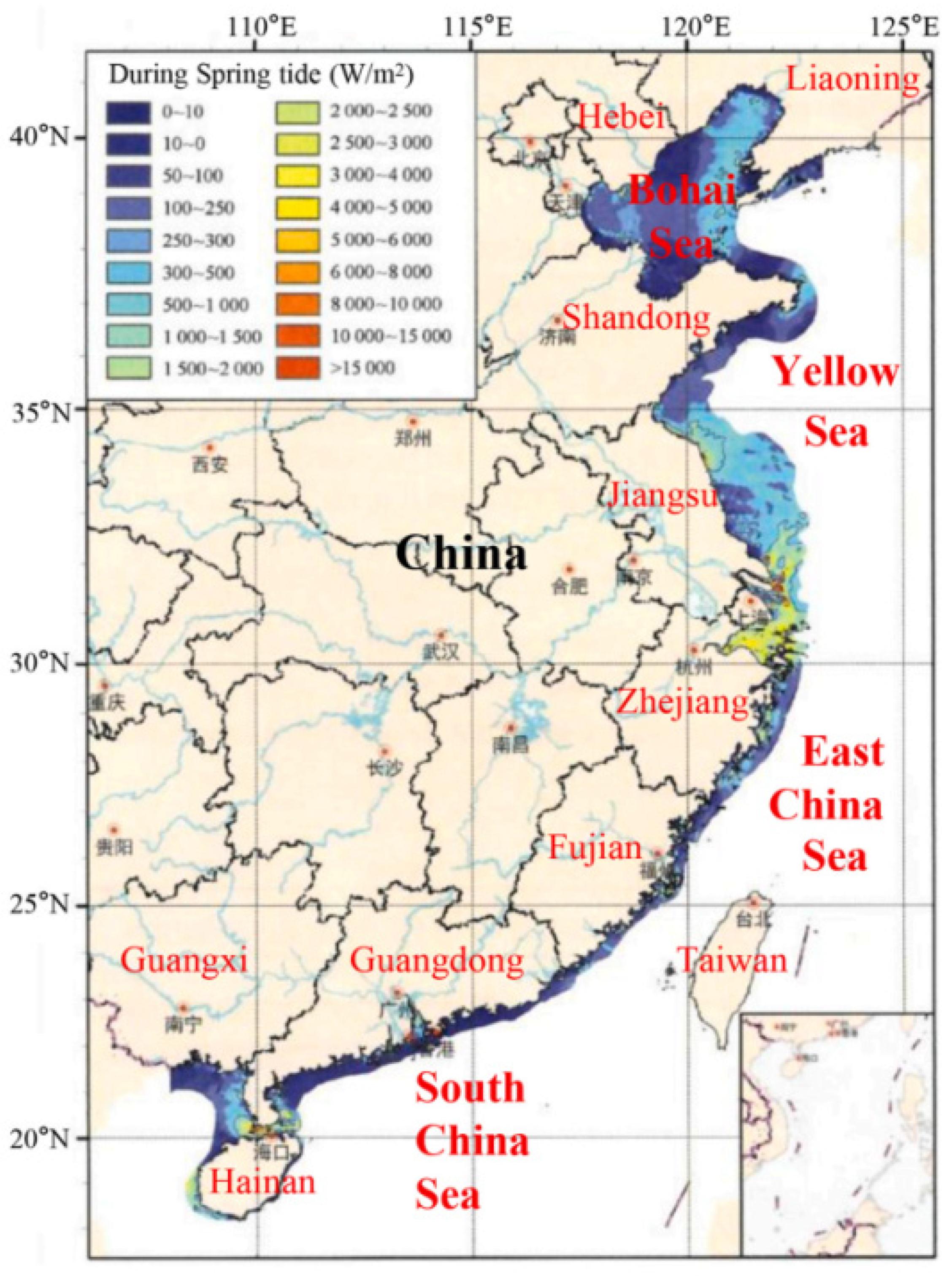

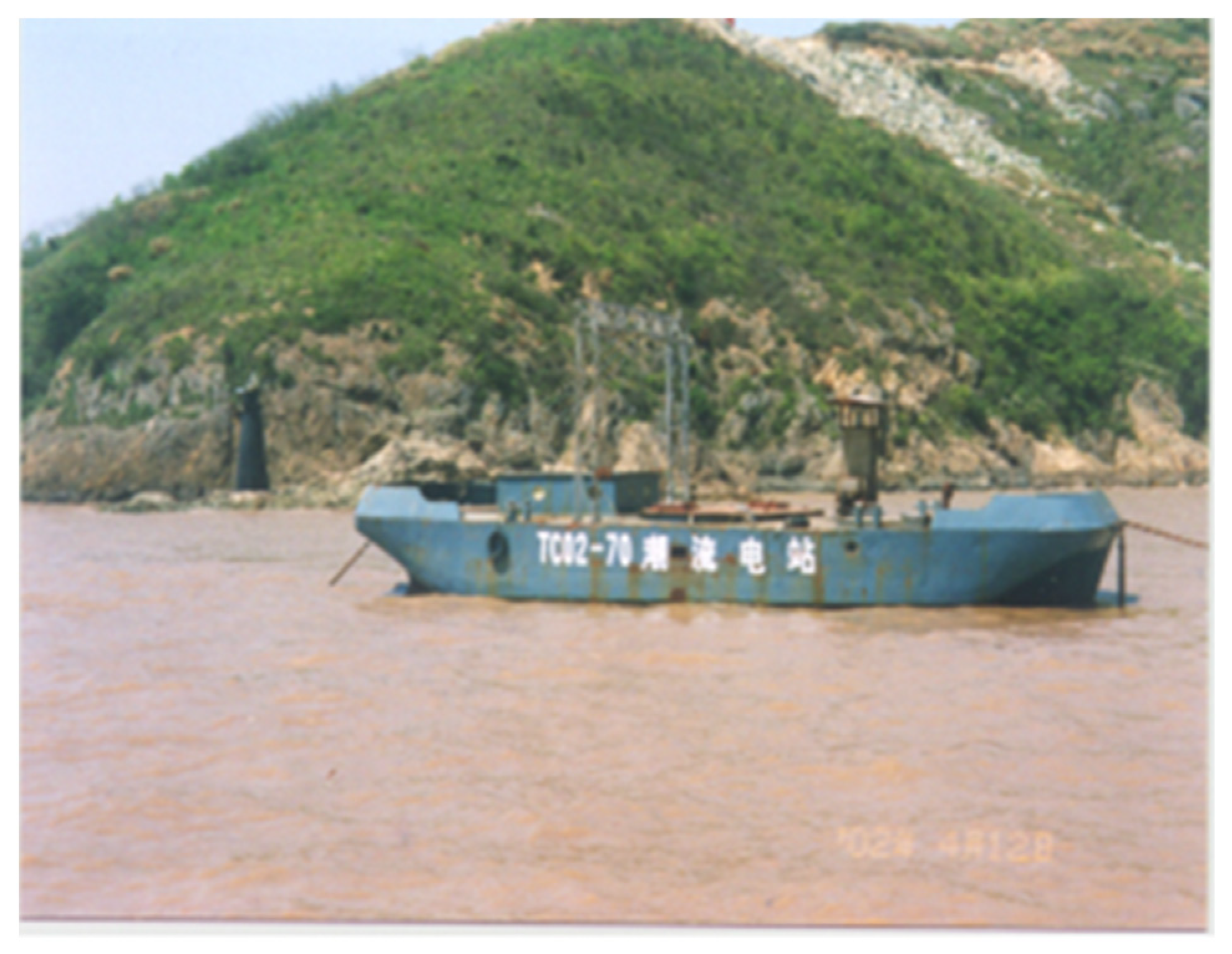
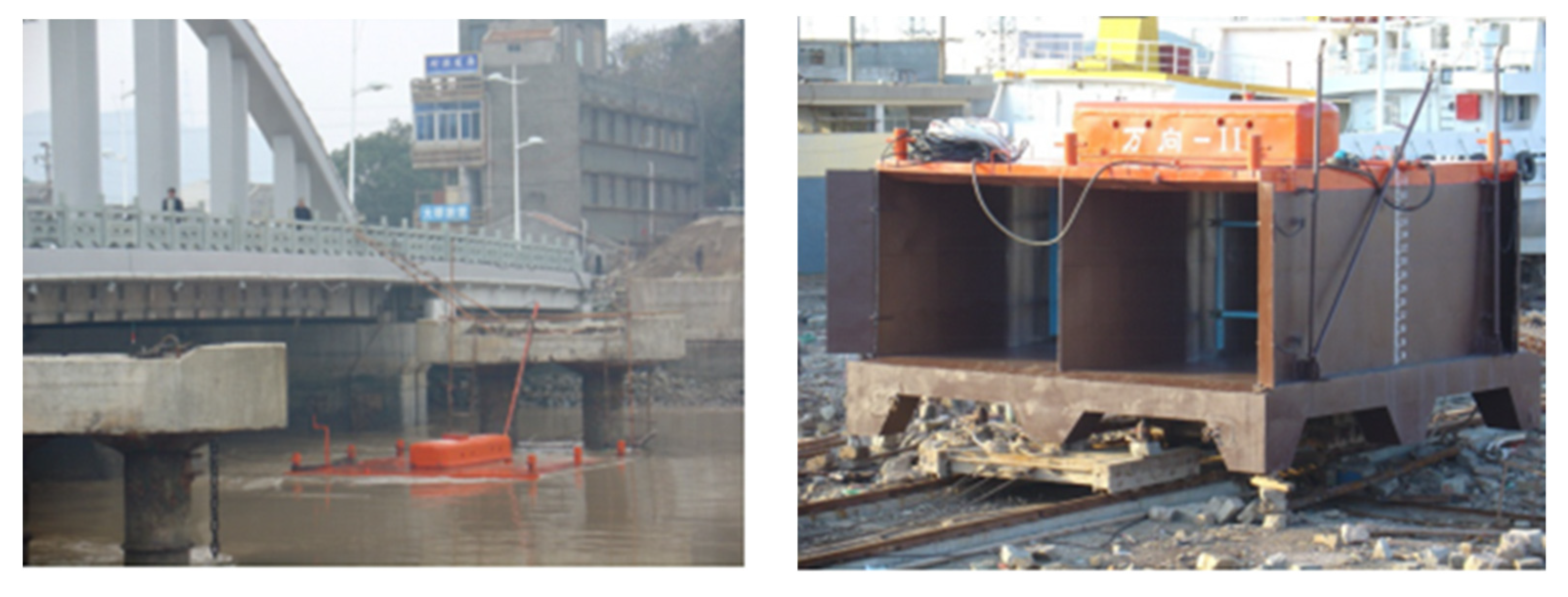

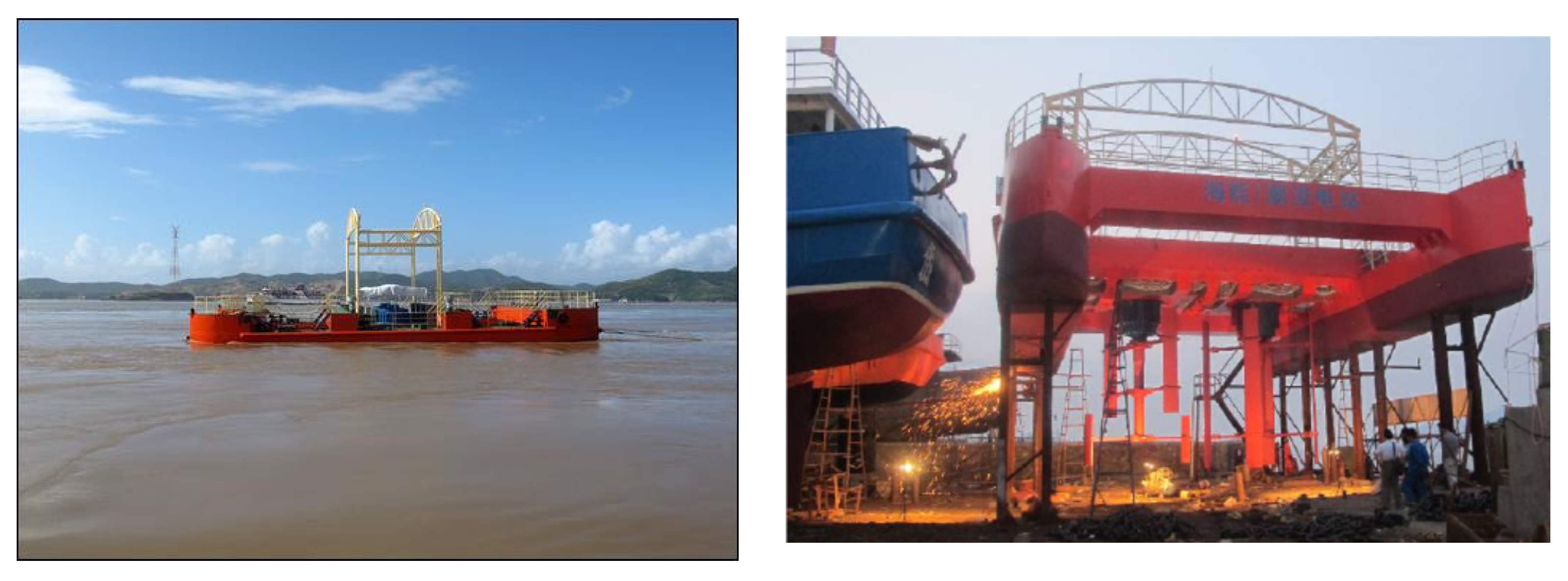

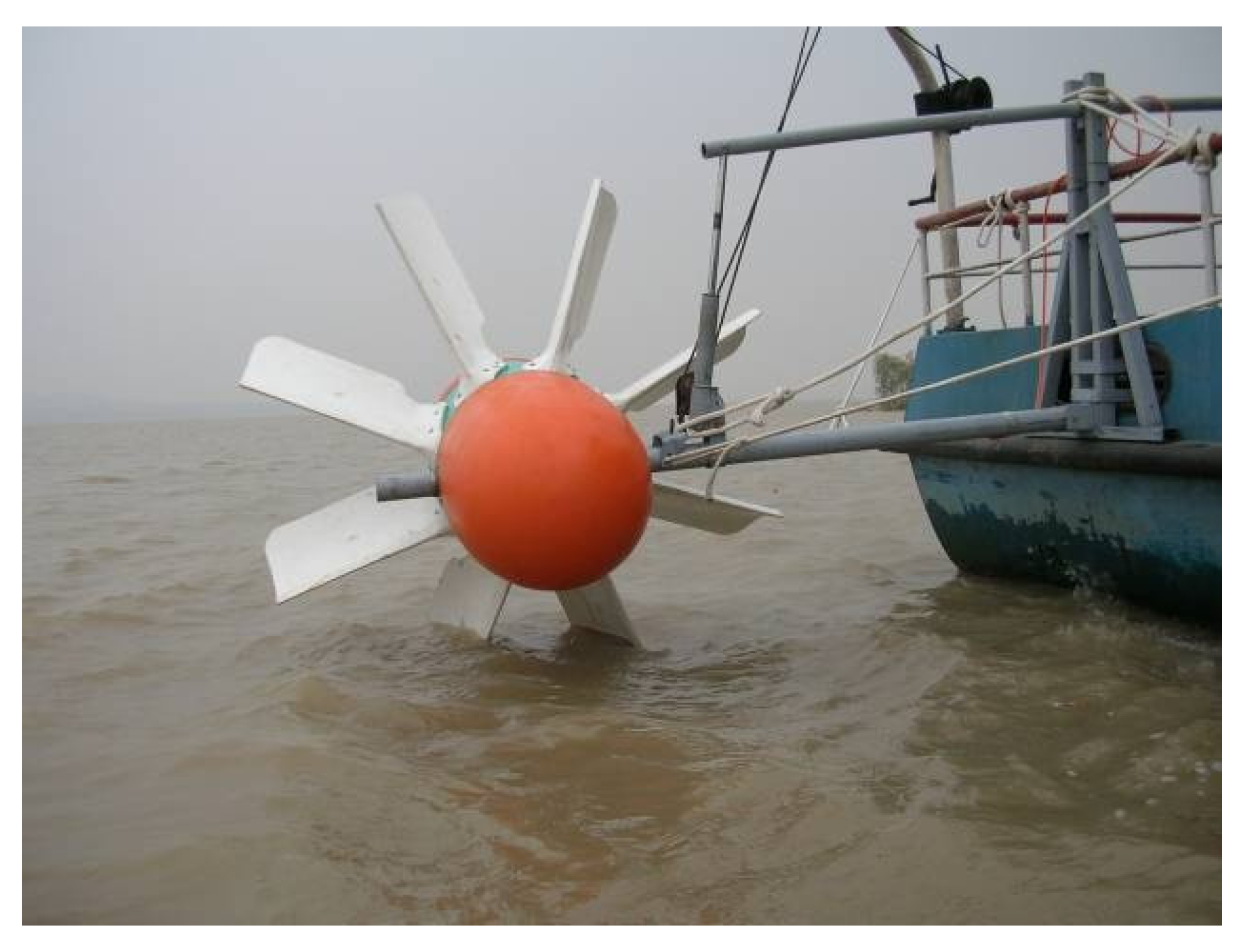
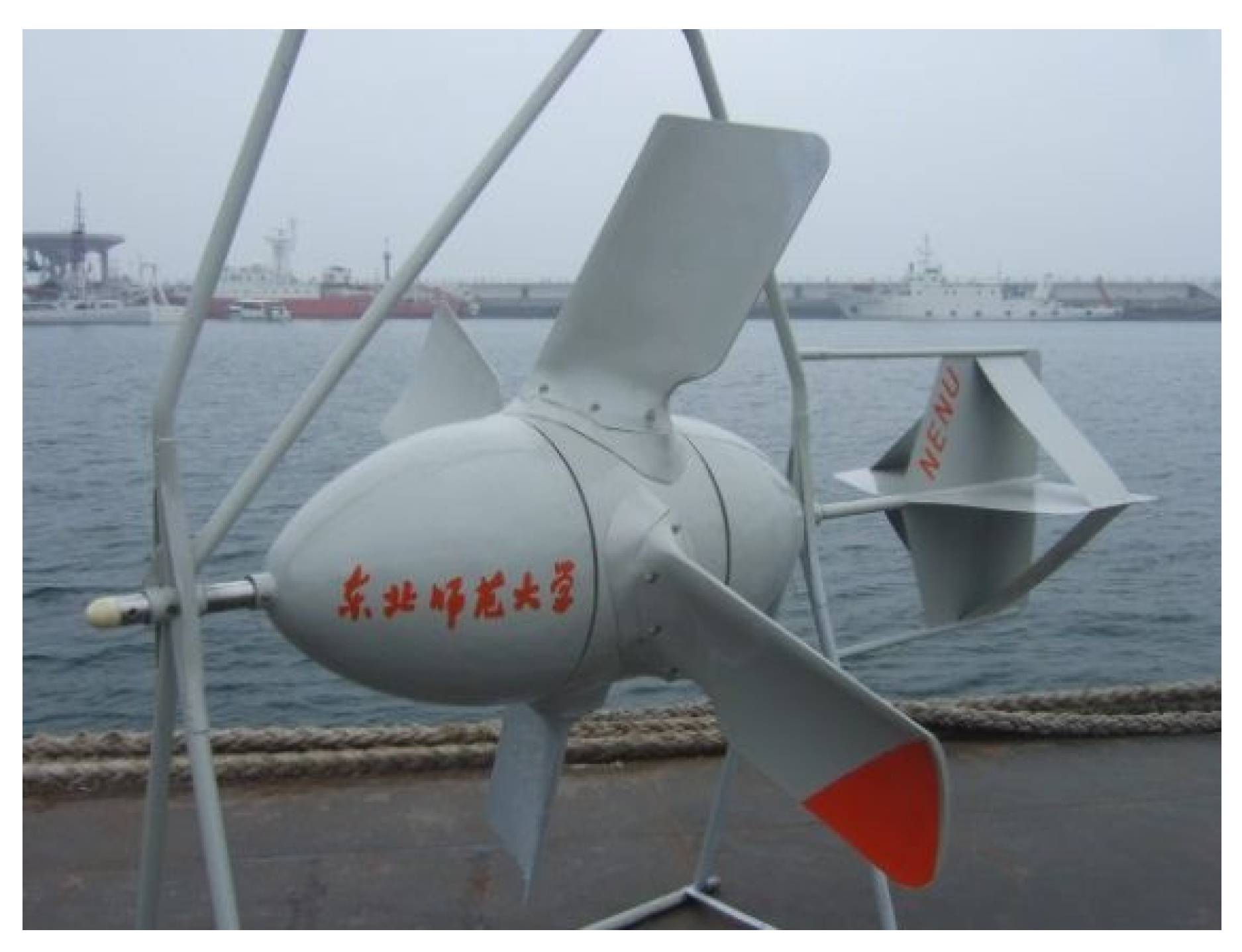
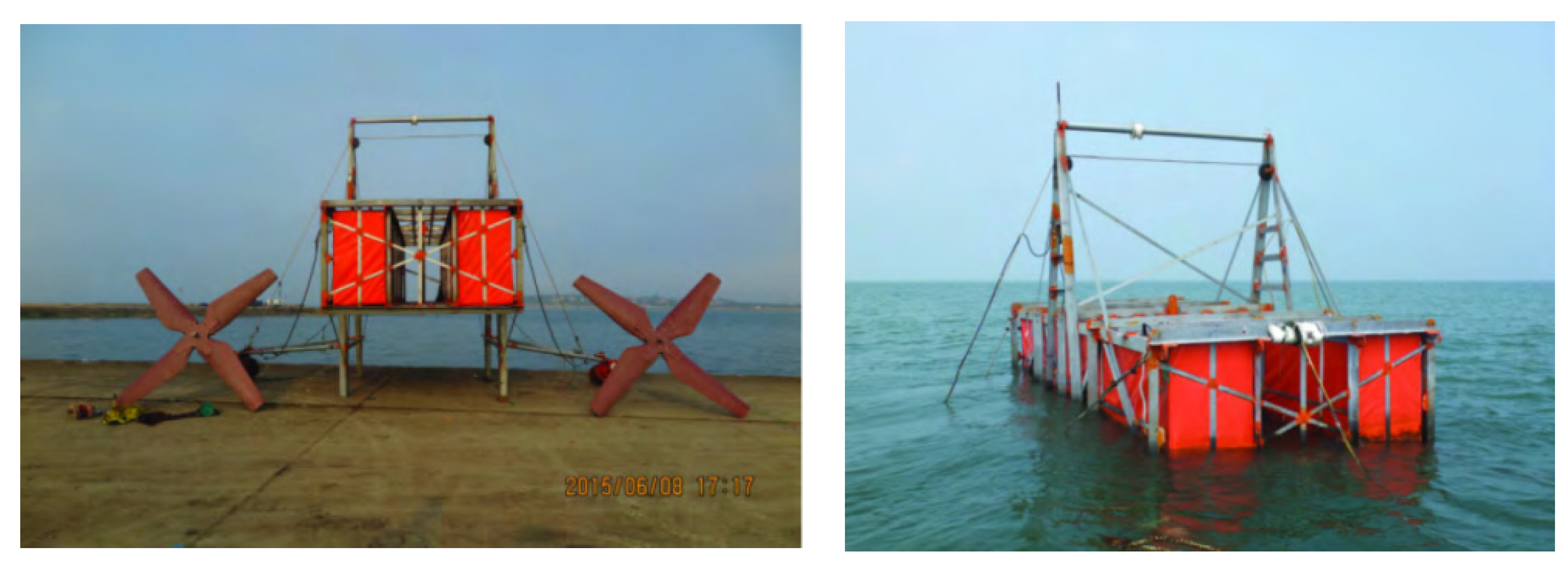
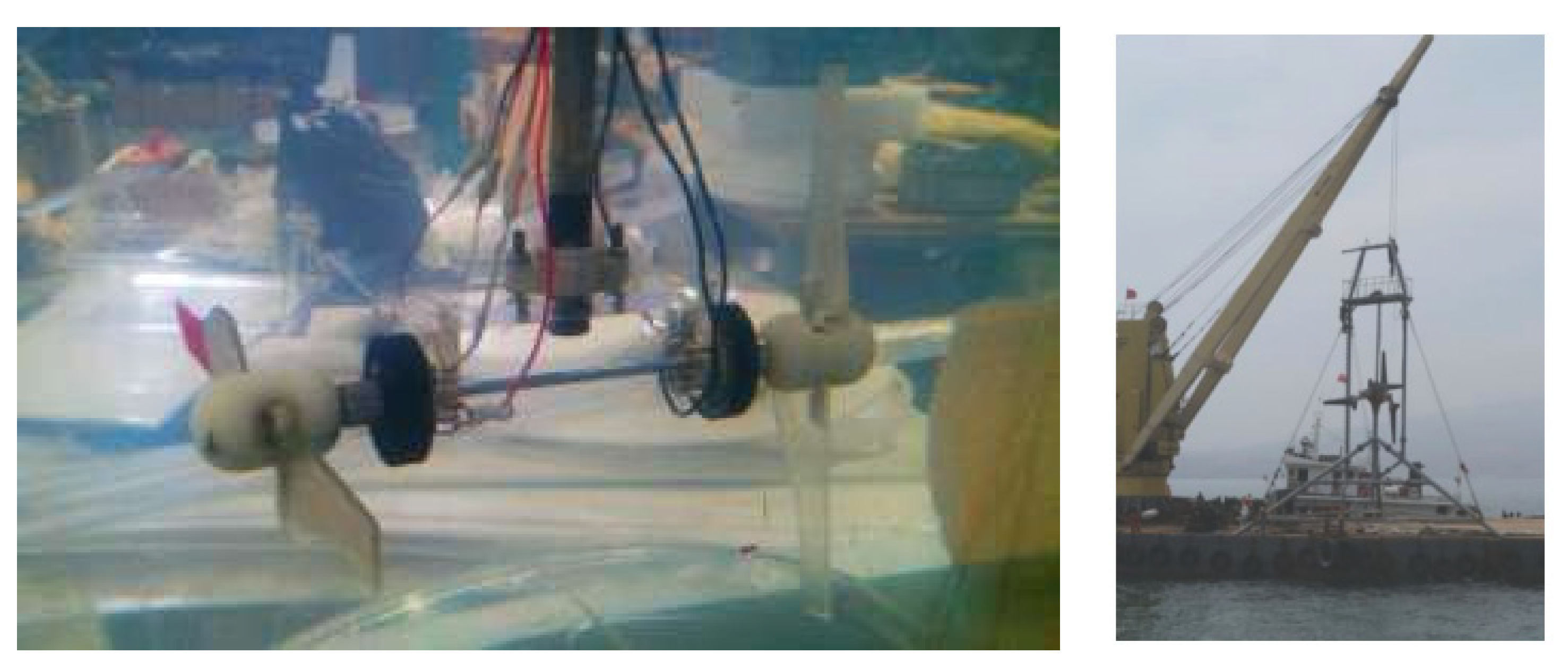
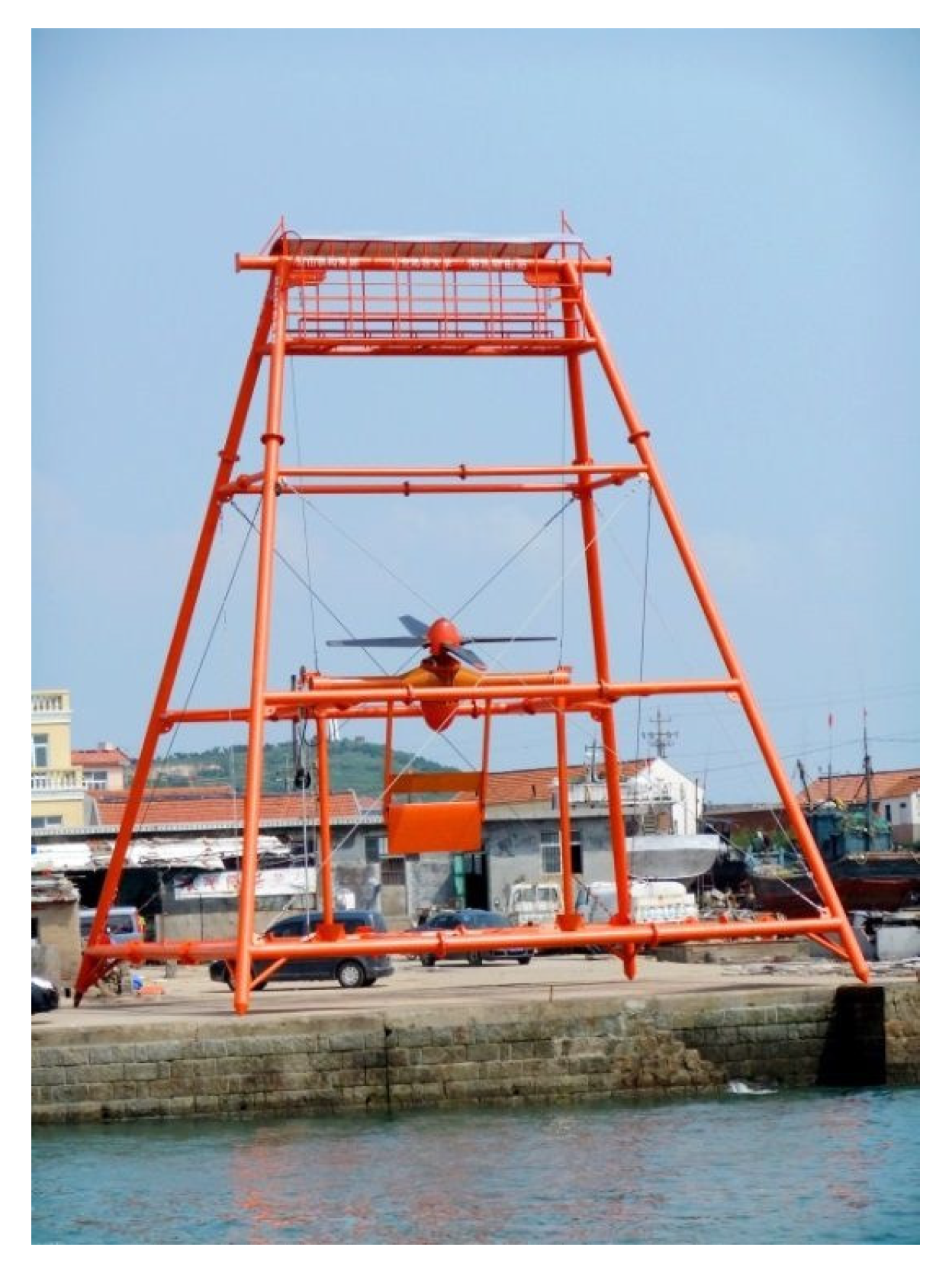

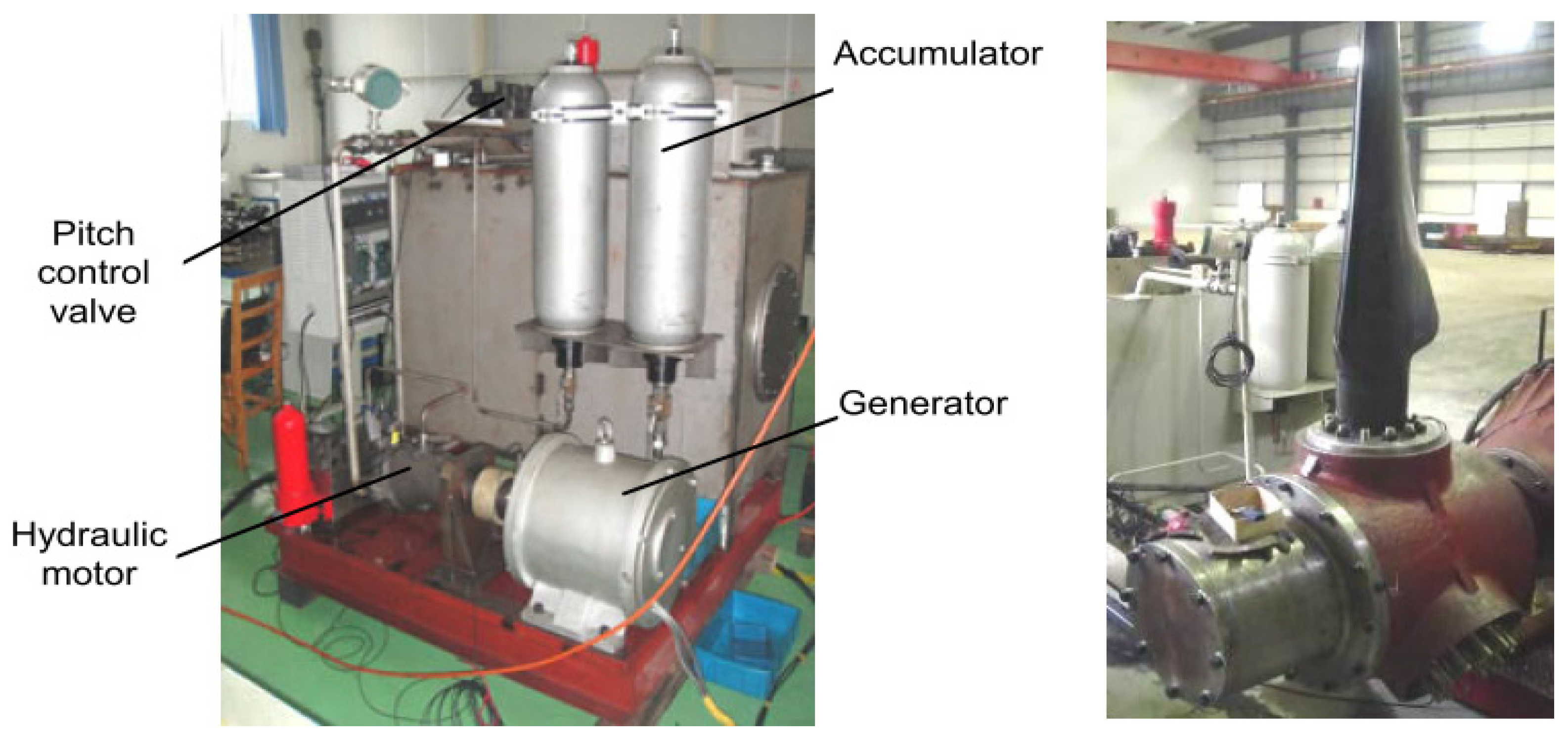
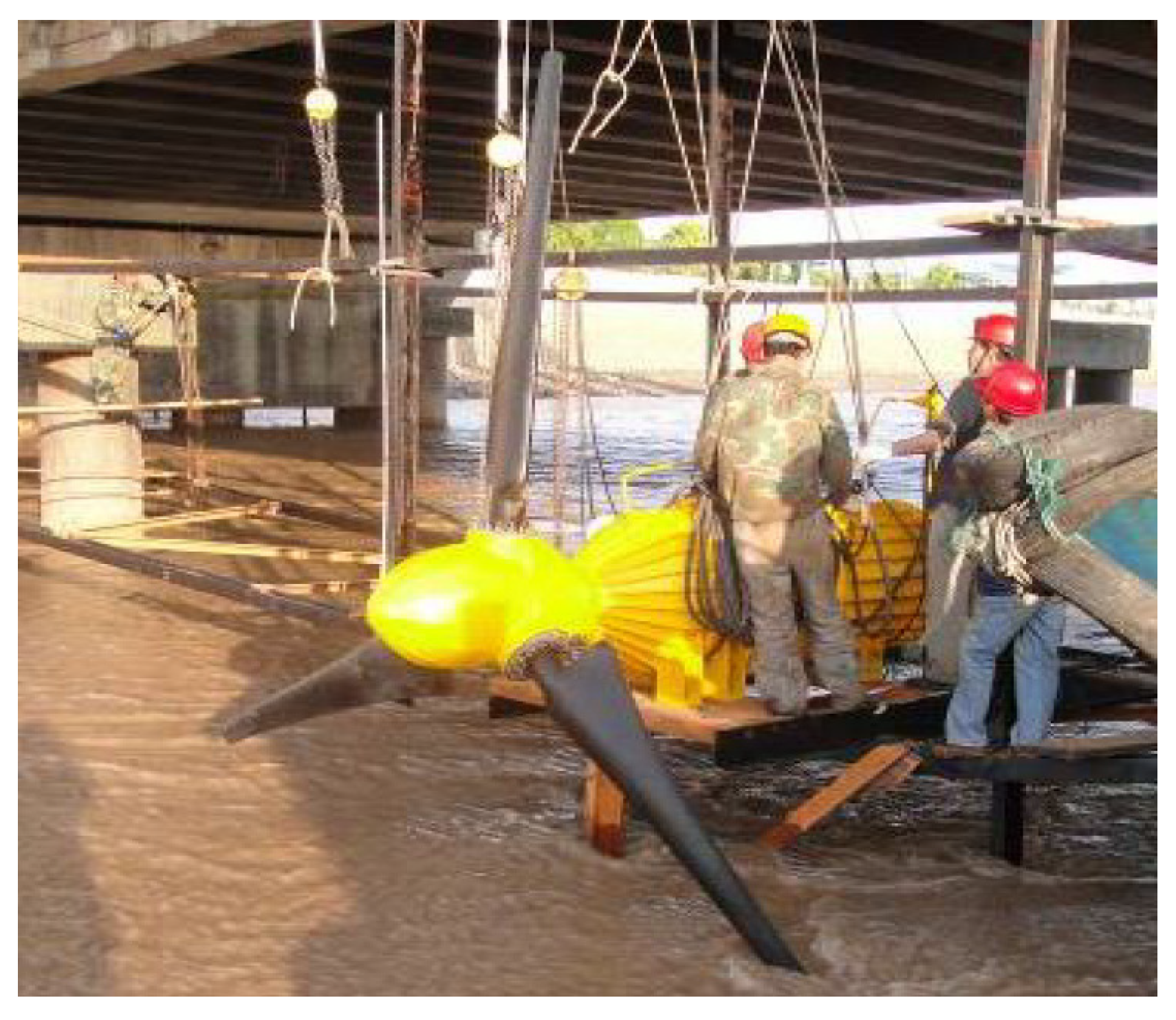

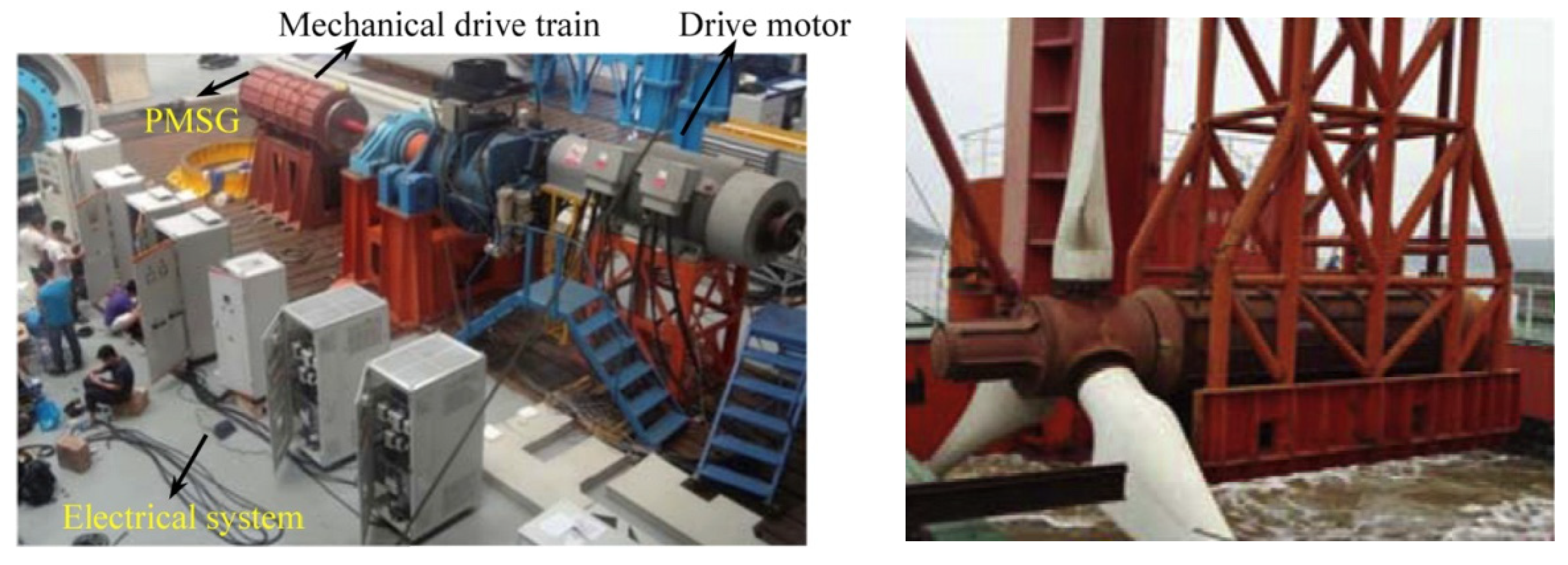
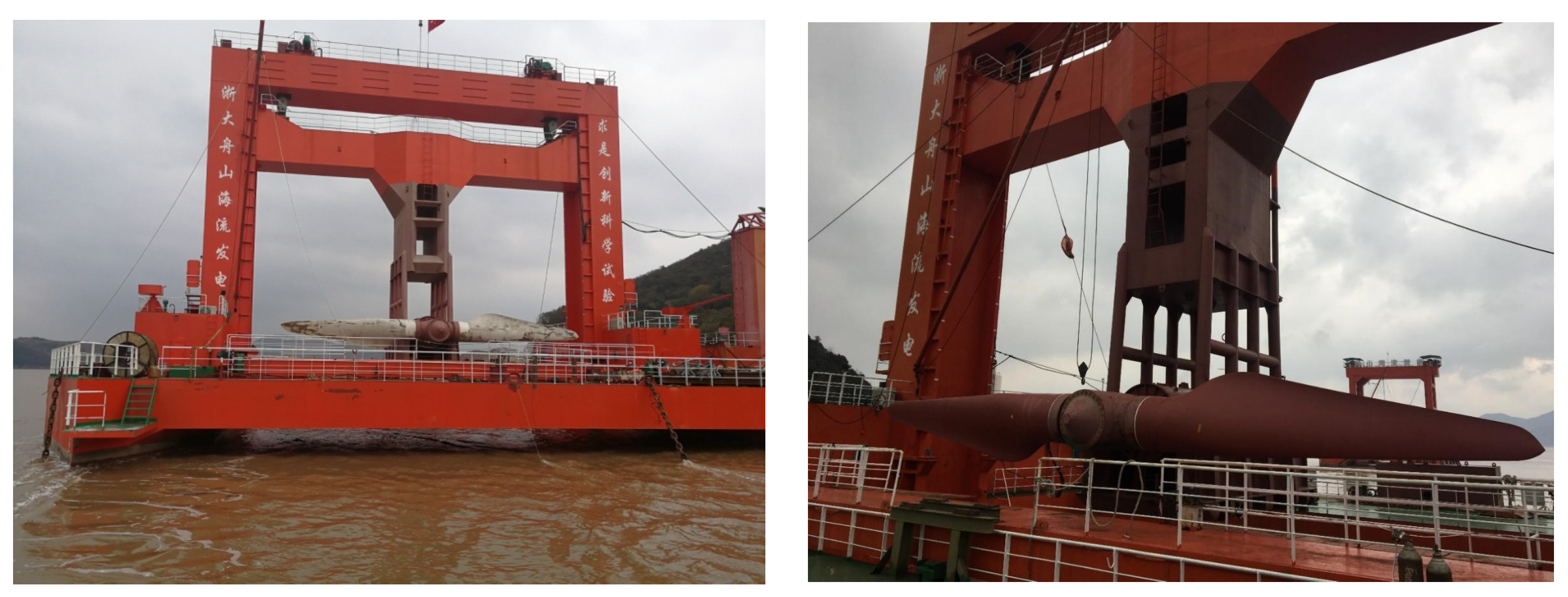
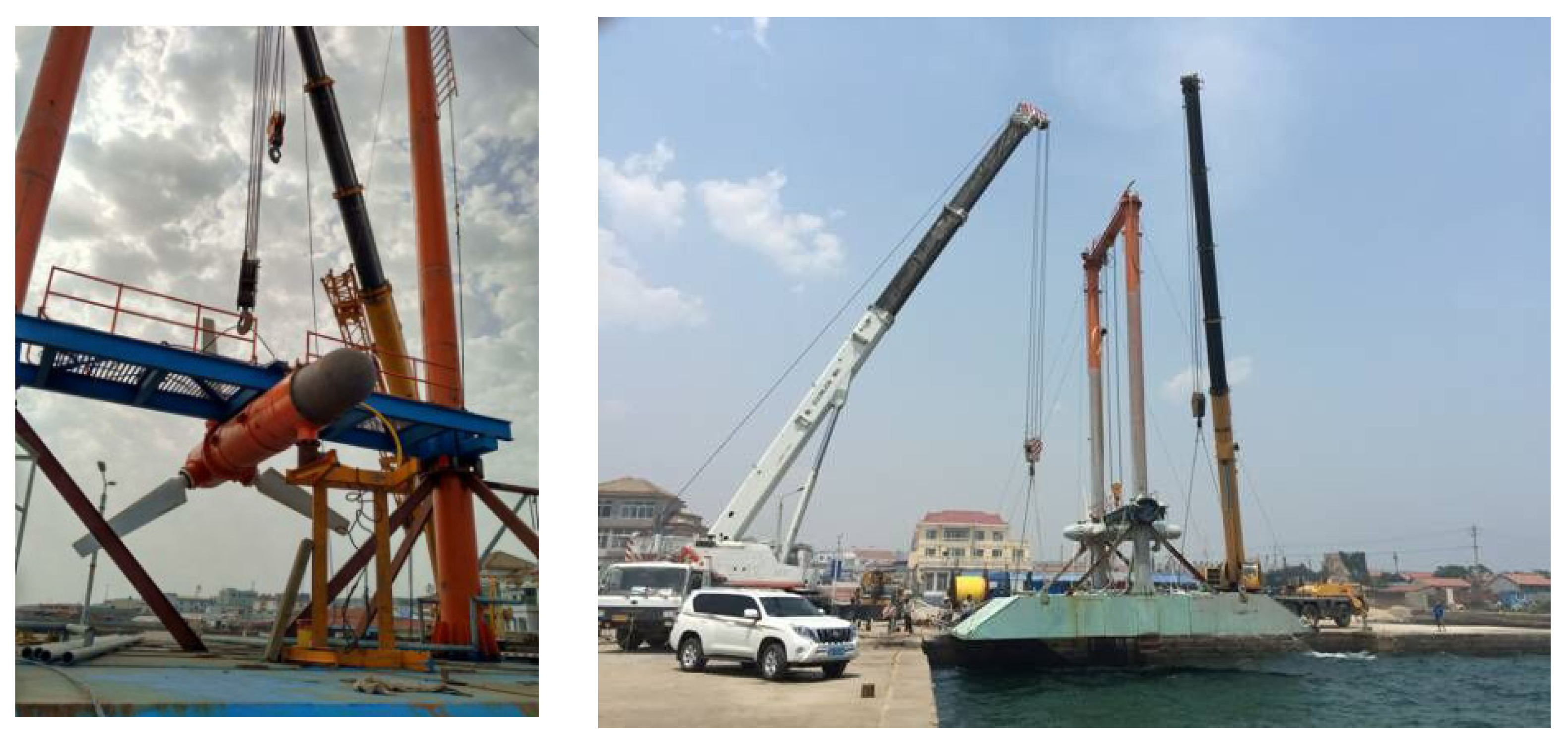
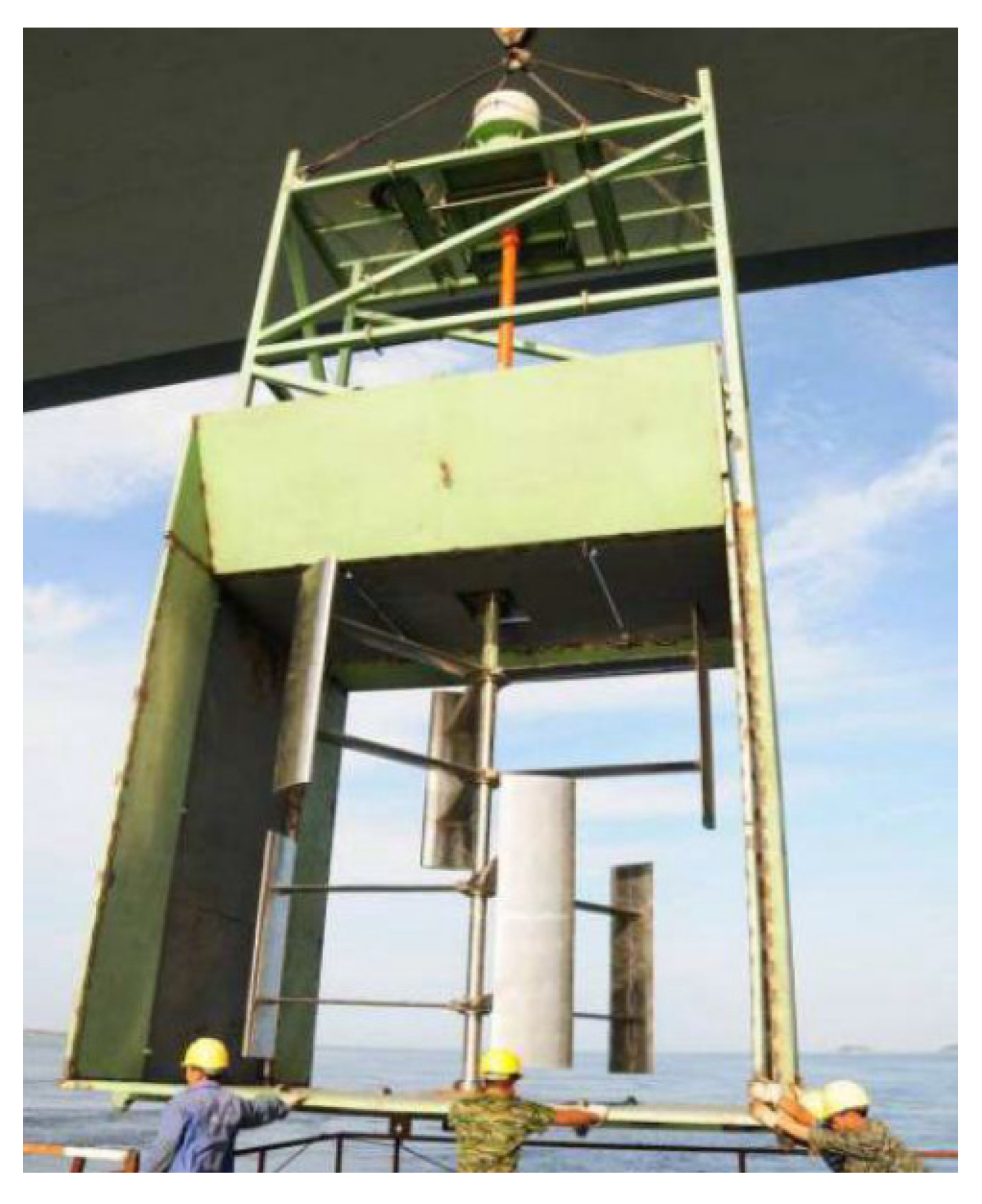

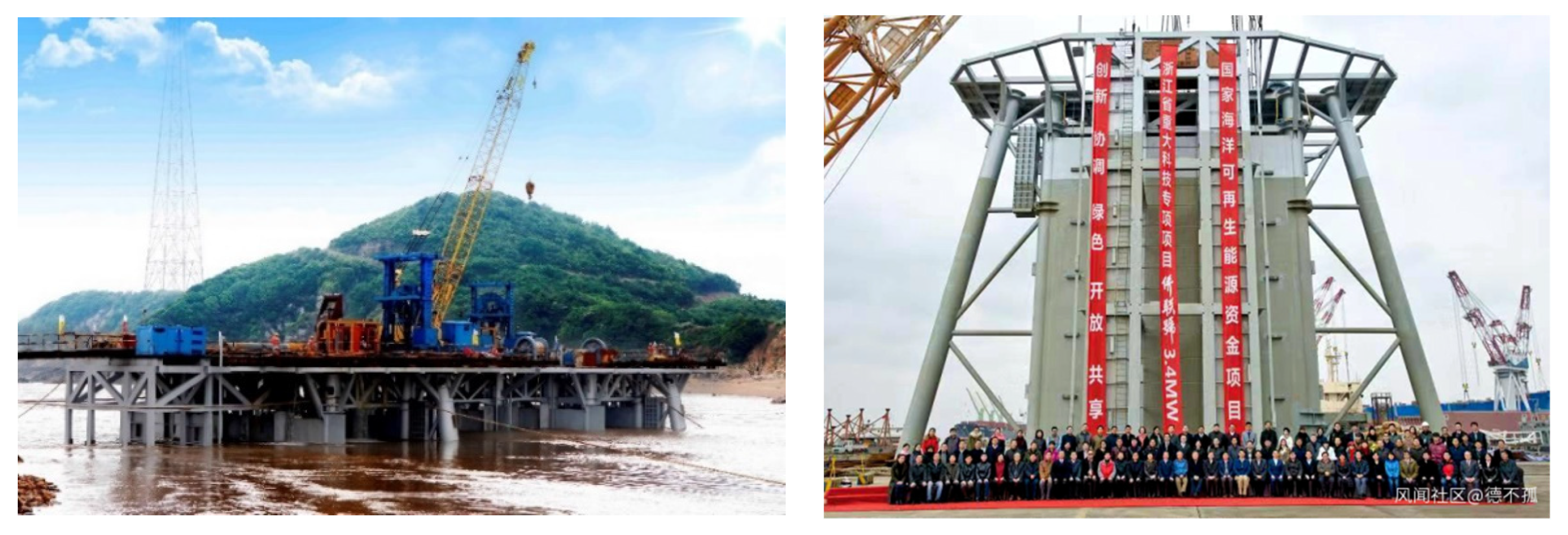
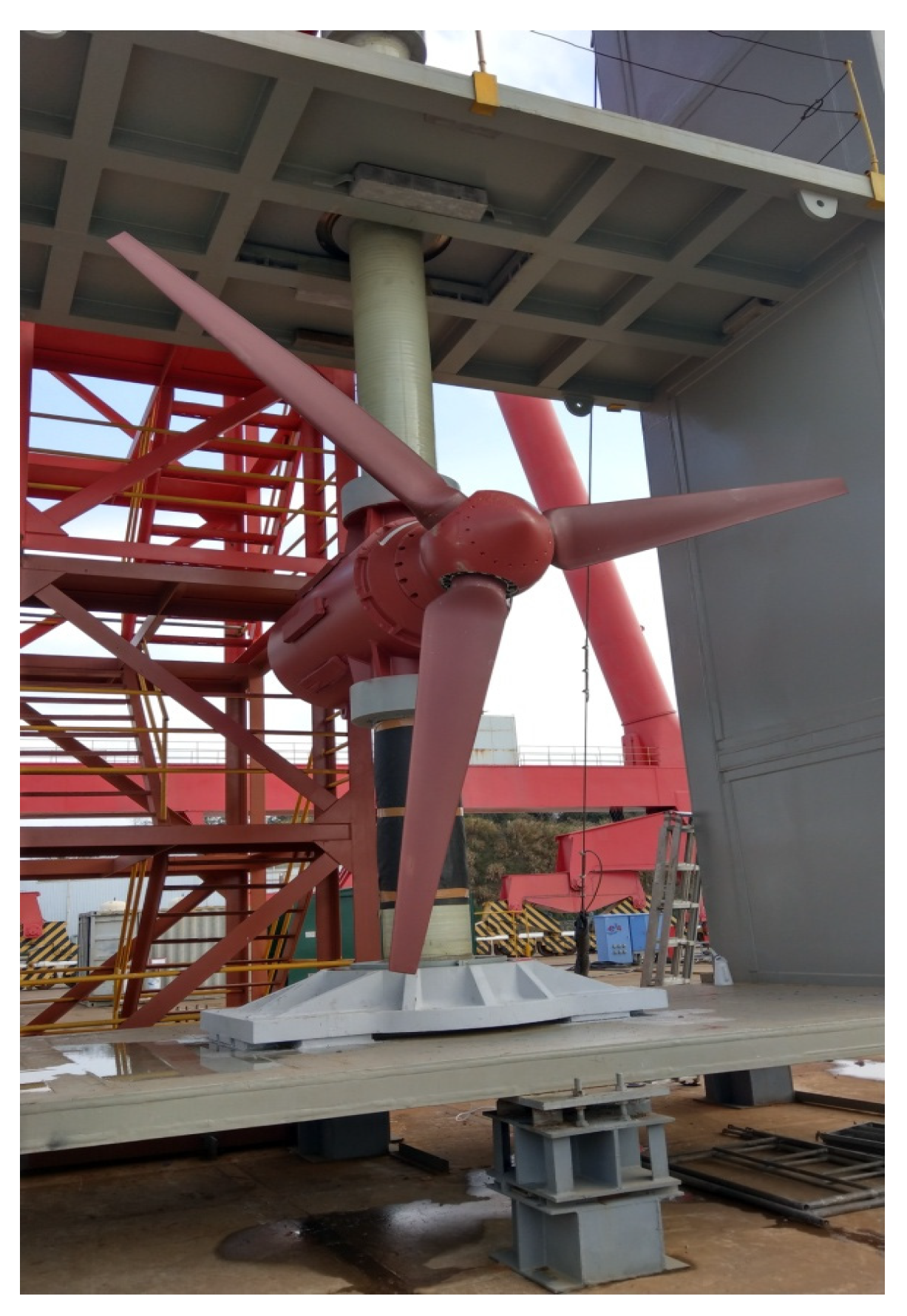
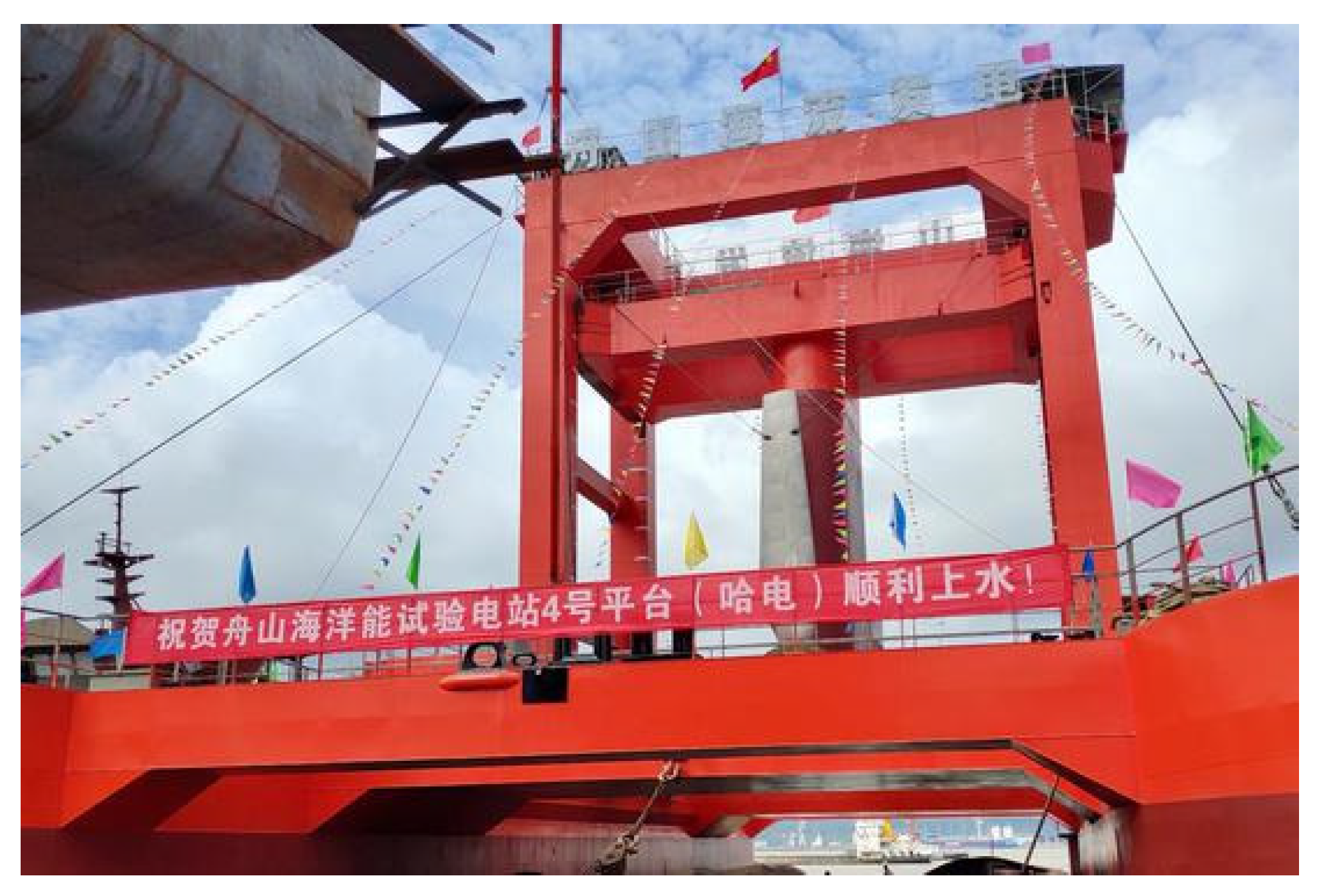
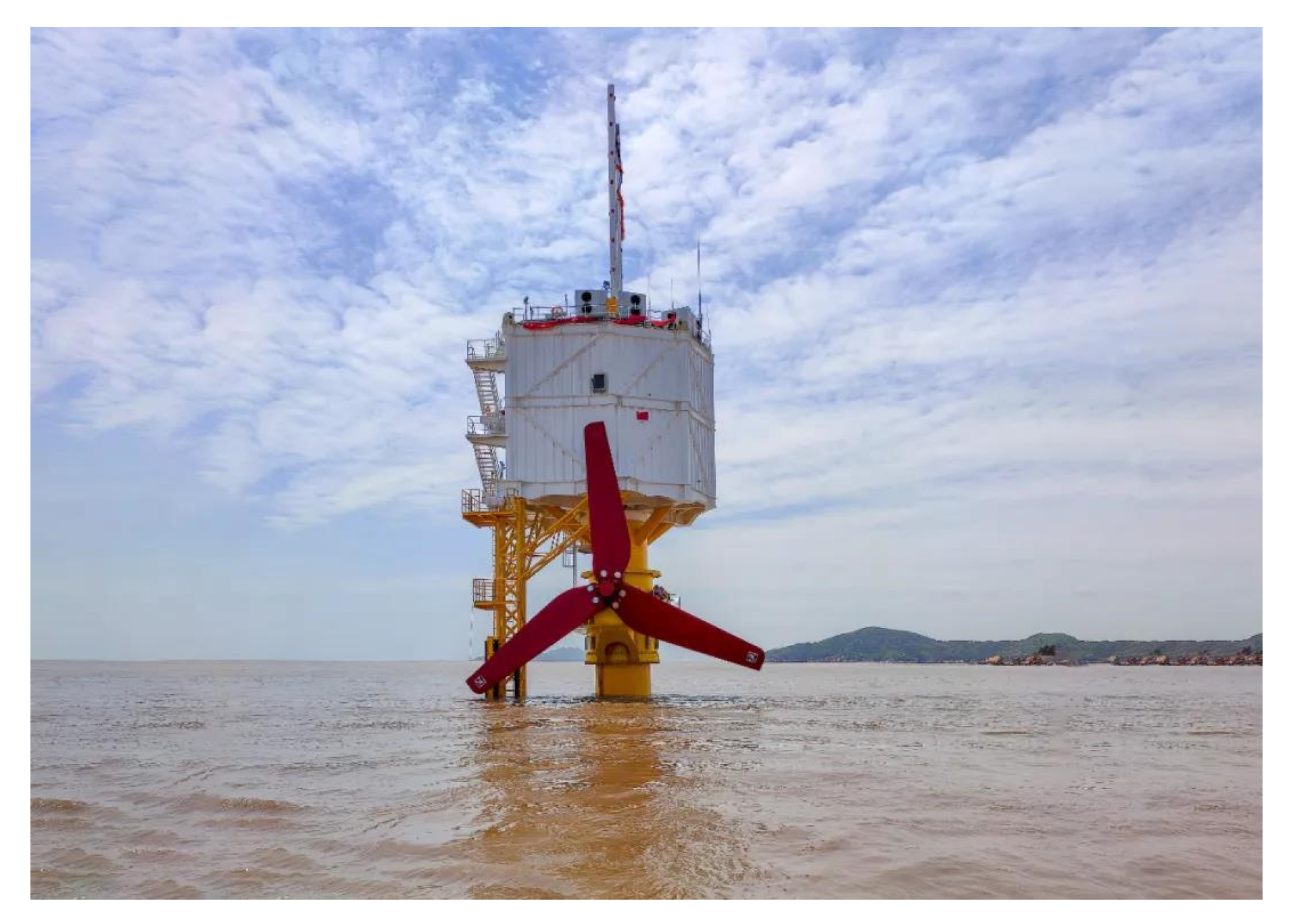
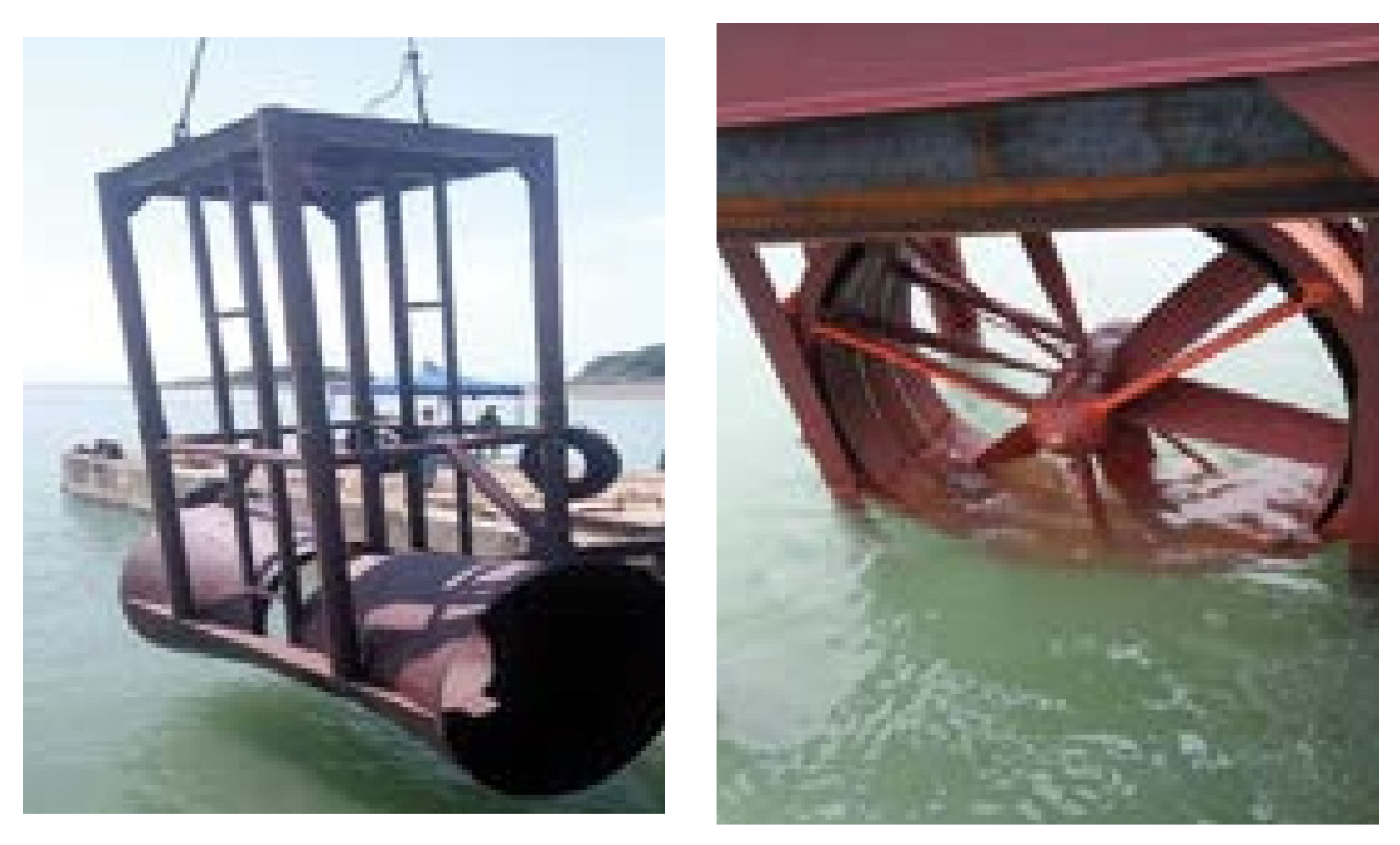

| Provinces or Regions | The Number of Channel | Average Power/MW | Proportion/% |
|---|---|---|---|
| Liaoning | 5 | 1130.47 | 8.1 |
| Shandong | 7 | 1177.91 | 8.4 |
| Yangtze Estuary | 4 | 304.88 | 2.2 |
| Zhejiang | 37 | 7090.28 | 51 |
| Fujian | 19 | 1280.49 | 9.1 |
| Taiwan | 35 | 2282.50 | 16.3 |
| Guangdong | 16 | 376.56 | 2.7 |
| Guangxi | 4 | 23.08 | 0.2 |
| Hainan | 3 | 282.35 | 2 |
| Total | 130 | 13948.52 | 100 |
| Regions | The Name of Channel | The Average Stream Density of Energy (kW/m2) |
|---|---|---|
| Bohai Strait | Laotieshan Channel | 17.41 |
| North of Beichenghuang Island | 13.69 | |
| Yangtze Estuary | North Harbor of Yangtze River Estuary | 10.3 |
| Zhejiang | North of Hangzhou Bay | 28.99 |
| Jintang Channel | 25.93 | |
| Guishan Channel | 23.89 | |
| Xihoumen Channel | 19.09 | |
| Fujian | Northwest of Sandu Cape in Sandu’ao Port | 15.11 |
| Taiwan | Southwest of Yuwong Island | 13.69 |
| Provinces | Liaoning | Shandong | Jiangsu | Zhejiang | Fujian | Guangdong | Guangxi | Hainan |
| Resource reserves (MW) | 299 | 1163 | 564 | 5168 | 467 | 337 | 23 | 306 |
| No. | Key Regions | Class A (km2) | Class B (km2) | Class C (km2) |
|---|---|---|---|---|
| 1 | Bohai Strait | 0.0 | 1.0 | 41.2 |
| 2 | Chengshan Cape | 0.0 | 1.2 | 27.8 |
| 3 | Jiaozhou Bay | 0.0 | 0.0 | 4.5 |
| 4 | Zhaitang Island | 0.0 | 0.0 | 0.0 |
| 5 | Yangtze Estuary | 0.0 | 0.0 | 3263.5 |
| 6 | Hangzhou Bay | 0.0 | 0.0 | 486.3 |
| 7 | Zhoushan Archipelago | 31.4 | 160.4 | 7808.8 |
| 8 | Sansha Bay | 5.2 | 21.0 | 256.8 |
| 9 | Kinmen Archipelago | 0.0 | 0.0 | 3.8 |
| 10 | Qiongzhou Strait | 0.0 | 0.0 | 1769.0 |
| Sum | 36.6 | 183.6 | 13,670.7 | |
| All | 13,890.9 | |||
| Name | Research Institutions | Country | Type | Capacity | Diameter | Date | Test Site | Variable- Pitch | with Gear Box | with Duct | Rated Velocity |
|---|---|---|---|---|---|---|---|---|---|---|---|
| Clean Current Turbine | Clean Current | Canada | horizontal-axis | 65 kW | 6 m | 2006 | Race Rocks, Canada | No | No | Yes | |
| Sabella D03 | SABELLA | France | horizontal-axis | 10 kW | 3 m | 2008 | Odet’s estuary in South Brittany | No | No | No | |
| Sabella D10 | SABELLA | France | horizontal-axis | 1 MW | 10 m | 2015 | Ushant Island | No | No | No | 4 m/s |
| Alstom tidal turbine | Alstom | France | horizontal-axis | 1 MW | 18 m | 2013 | Orkney Islands | Yes | |||
| HyTide 1000 | Ocean Energies at Voith Hydro | German | horizontal-axis | 110 kW | 5.3 m | 2011 | Korea | No | No | 2.9 m/s | |
| HyTide 1000-16 | Ocean Energies at Voith Hydro | German | horizontal-axis | 1 MW | 13–16 m | No | No | 3.5 m/s | |||
| OpenCentre | OpenHydro | Ireland | horizontal-axis | 250 kW | 6 m | 2006 | EMEC | No | No | Yes | 1.5 m/s |
| Kobold | Insean | Italy | vertical-axis | 20 kW | 6 m | 2006 | Yes | No | 1.8 m/s | ||
| E-tide | Hammerfest Strøm | Norway | horizontal-axis | 300 kW | 15–16 m | 2003 | Kvalsund, Northern Norway | Yes | No | ||
| HS1000 | Andritz Hydro Hammerfest | Norway | horizontal-axis | 1 MW | 23 m | 2011 | EMEC | Yes | No | ||
| HS300 | Andritz Hydro Hammerfest | Norway | horizontal-axis | 300 kW | 10 m | 2003 | Kvalsunder, Norway | No | |||
| Seaflow | Atlantis Energy Ltd. (MCT) | UK | horizontal-axis | 300 kW | 11 m | 2003 | North Devon, UK | Yes | Yes | No | |
| SeaGen S | Atlantis Energy Ltd. (MCT) and Bluewater | UK | horizontal-axis | 1 × 2 MW | 20 m | 2008 | Strangford Lough, Northern Ireland | Yes | Yes | No | 2.5 m/s |
| SeaGen U | Atlantis Energy Ltd. (MCT) | UK | horizontal-axis | 1.5 MW | 20 m | No | |||||
| SR2000 | Scotrenewables Tidal Power Ltd. | UK | horizontal-axis | 2 MW | 20 m | 2016 | Pentland Firth between the North of Scotland and the Orkney Islands | No | No | 3 m/s | |
| AR1000 | Atlantis Energy | UK | horizontal-axis | 1 MW | 18 m | 2011 | EMEC’s Fall of Warness tidal test site | No | Yes | No | 2.65 m/s |
| AR1500 | Atlantis Energy | UK | horizontal-axis | 1.5 MW | 8 m | 2017 | Pentland Firth | Yes | No | 3 m/s | |
| Deepgen | GE(TGL) | UK | horizontal-axis | 500 kW | 2011 | EMEC | No | ||||
| Wanxiang I | HUE | China | vertical-axis | 70 kW | 2.2 m | 2002 | Guishan Channel, Zhejiang Province | Yes | No | 2.5 m/s | |
| Wanxiang II | HUE | China | vertical-axis | 40 kW | 2005 | Xiaomentou Channel, Zhejiang Province | |||||
| Haiming I | HUE | China | horizontal-axis | 10 kW | 2011 | Xiaomentou Channel, Zhejiang Province | No | Yes | 2 m/s | ||
| Haineng I | HUE | China | vertical-axis | 2 × 150 kW | 4 m | 2012 | Guishan Channel, Zhejiang Province | Yes | No | No | |
| Haineng II | HUE | China | horizontal-axis | 2 × 100 kW | 12 m | 2013 | Zhaitang Island, Shandong Province | Yes | No | No | 1.7 m/s |
| Haineng III | HUE | China | vertical-axis | 2 × 300 kW | 6 m | 2013 | Guishan Channel, Zhejiang Province | Yes | No | 3 m/s | |
| 2 kW TCPGS | NENU | China | horizontal-axis | 2 kW | Qingdao, Shandong Province | No | Yes | No | 0.9 m/s | ||
| 5 kW TCPGS | NENU | China | horizontal-axis | 5 kW | 2.6 m | 2014 | Zhaitang Island Channel, Shandong Province | No | No | No | 2.2 m/s |
| 15 kW TCPGS | NENU | China | horizontal-axis | 15 kW | 2016 | Zhaitang Island Channel, Shandong Province | Yes | Yes | No | 2 m/s | |
| 20 kW TCPGS | NENU | China | horizontal-axis | 20 kW | 5 m | 2013 | No | No | No | 2.1 m/s | |
| 300 kW TCPGS | NENU | China | horizontal-axis | 300 kW | 16.5 m | 2019 | Zhoushan, Zhejiang Province | Yes | No | 2 m/s | |
| Power supply system for ocean energy underwater instruments | NENU | China | horizontal-axis | 120 W | 1.8 m | 2019 | Qingdao, Shandong Province | No | Yes | No | |
| Underwater Windmill | ZJU | China | horizontal-axis | 5 kW | 2006 | Xiaomentou Channel, Zhejiang Province | No | Yes | No | 1.7 m/s | |
| 20 kW TCPGS | ZJU | China | horizontal-axis | 20 kW | 2010 | / | Yes | No | |||
| 25 kW TCPGS | ZJU | China | horizontal-axis | 25 kW | 4.4 m | 2009 | Daishangang Channel, Zhejiang Province | Yes | Yes | No | 2 m/s |
| 60 kW semi-direct-drive TCPGS | ZJU | China | horizontal-axis | 60 kW | 7 m | 2014 | Zhairuoshan, Zhejiang Province | Yes | No | 2 m/s | |
| 2 × 300 kW TCPGS | ZJU | China | horizontal-axis | 300 kW | 15.5 m | 2018 | Zhairuoshan, Zhejiang Province | Yes | No | 2 m/s | |
| 120 kW semi-direct-drive TCPGS | ZJU | China | horizontal-axis | 120 kW | 10 m | 2016 | Zhairuoshan, Zhejiang Province | Yes | Yes | No | 2 m/s |
| 650 kW semi-direct-drive TCPGS | ZJU | China | horizontal-axis | 650 kW | 15.45 m | 2017 | Yes | Yes | No | 2.5 m/s | |
| 5 kW flexible blade TCPGS | OUC | China | vertical-axis | 5 kW | 2008 | Zhaitang Island Channel, Shandong Province | Yes | No | Yes | 1.7 m/s | |
| Haichuan | OUC | China | horizontal-axis | 20 kW | 4.57 m | 2015 | Zhaitang Island Channel, Shandong Province | Yes | Yes | No | 1.7 m/s |
| 100 kW TCPGS | OUC | China | horizontal-axis | 100 kW | 10.5 m | 2013 | Zhaitang Island Channel, Shandong Province | Yes | Yes | No | 1.5 m/s |
| 15 kW direct-drive TCPGS | DUT | China | vertical-axis | 15 kW | 3.8 m | 2013 | the channel between Dachangshan and Xiaochangshan Islands, Liaoning Province | No | No | Yes | 1.3 m/s |
| Scientist · Overseas Chinese Federation | LHD | China | vertical-axis | 1.7 MW | 2018 | Xiushan Island, Zhejiang Province | |||||
| 300 kW Turbine | China Three Gorges Corporation | China | horizontal-axis | 300 kW | 2021 | Hulu Island, Zhejiang Province | No | ||||
| Flange-driven TCPGS | IEEACS | China | horizontal-axis | 2 × 2.5 kW | 2016 | Xishan Island, Zhejiang Province | Yes |
Publisher’s Note: MDPI stays neutral with regard to jurisdictional claims in published maps and institutional affiliations. |
© 2021 by the authors. Licensee MDPI, Basel, Switzerland. This article is an open access article distributed under the terms and conditions of the Creative Commons Attribution (CC BY) license (https://creativecommons.org/licenses/by/4.0/).
Share and Cite
Chen, H.; Li, Q.; Benbouzid, M.; Han, J.; Aït-Ahmed, N. Development and Research Status of Tidal Current Power Generation Systems in China. J. Mar. Sci. Eng. 2021, 9, 1286. https://doi.org/10.3390/jmse9111286
Chen H, Li Q, Benbouzid M, Han J, Aït-Ahmed N. Development and Research Status of Tidal Current Power Generation Systems in China. Journal of Marine Science and Engineering. 2021; 9(11):1286. https://doi.org/10.3390/jmse9111286
Chicago/Turabian StyleChen, Hao, Qi Li, Mohamed Benbouzid, Jingang Han, and Nadia Aït-Ahmed. 2021. "Development and Research Status of Tidal Current Power Generation Systems in China" Journal of Marine Science and Engineering 9, no. 11: 1286. https://doi.org/10.3390/jmse9111286
APA StyleChen, H., Li, Q., Benbouzid, M., Han, J., & Aït-Ahmed, N. (2021). Development and Research Status of Tidal Current Power Generation Systems in China. Journal of Marine Science and Engineering, 9(11), 1286. https://doi.org/10.3390/jmse9111286









